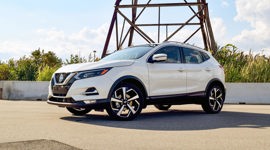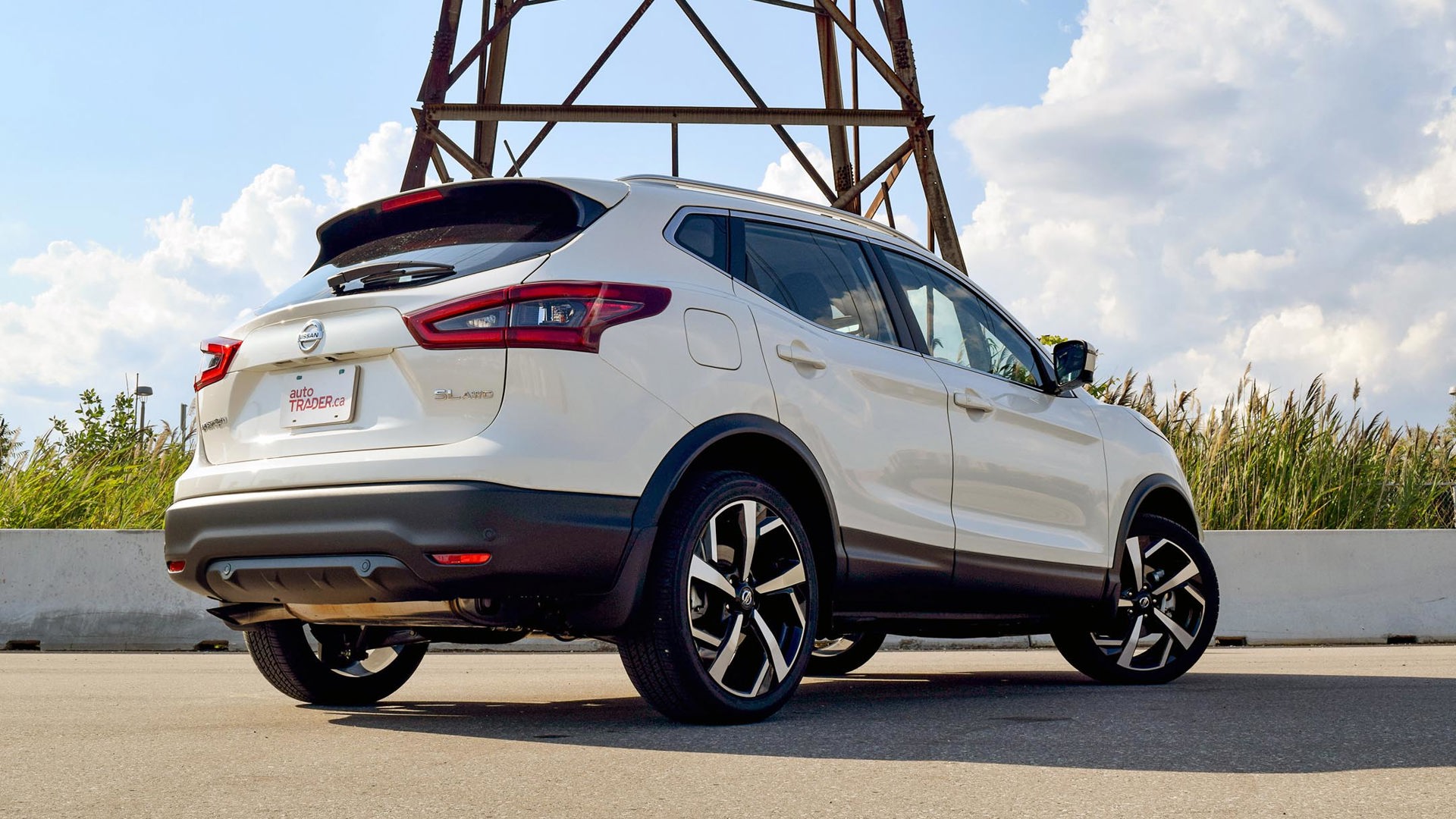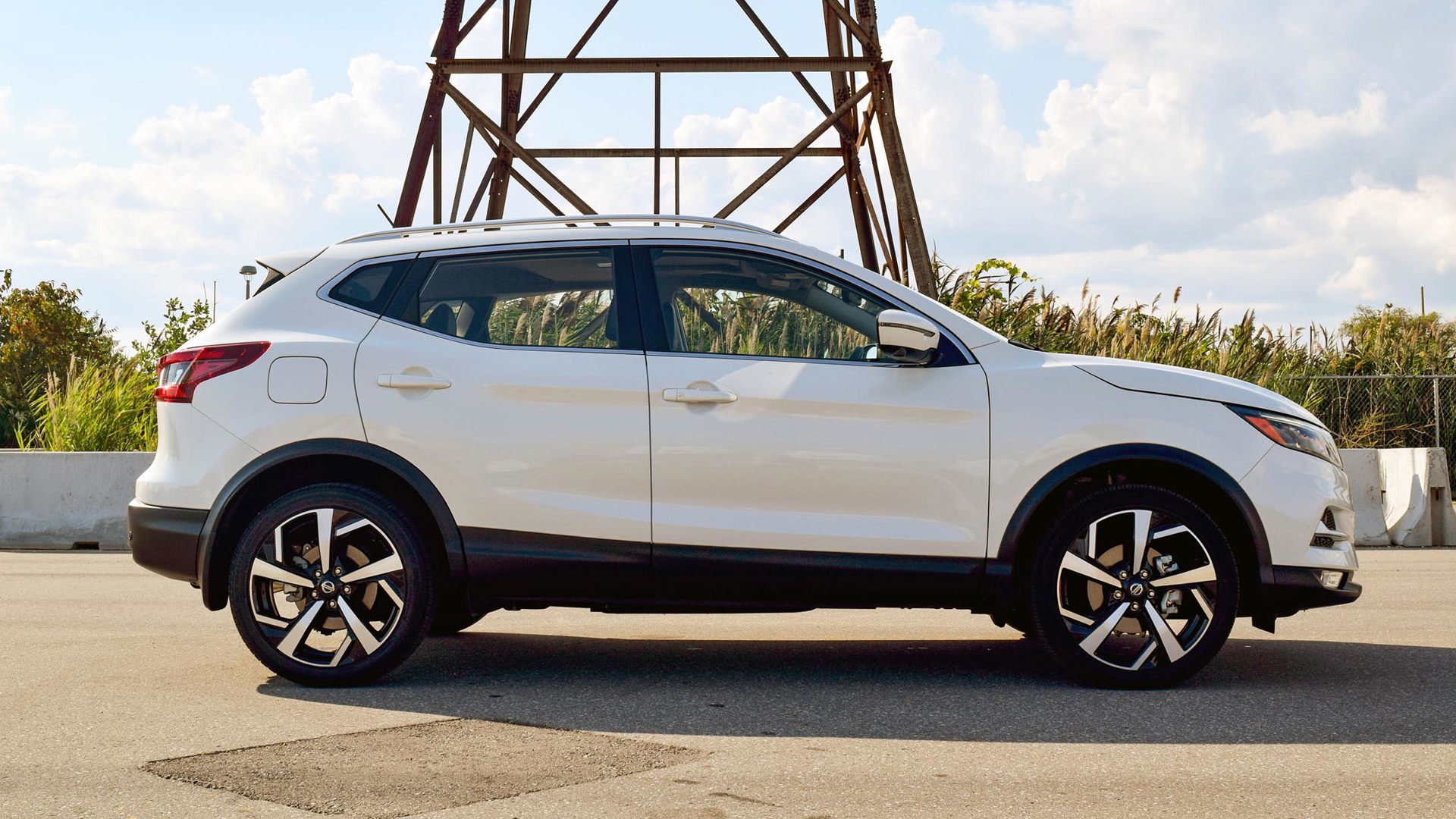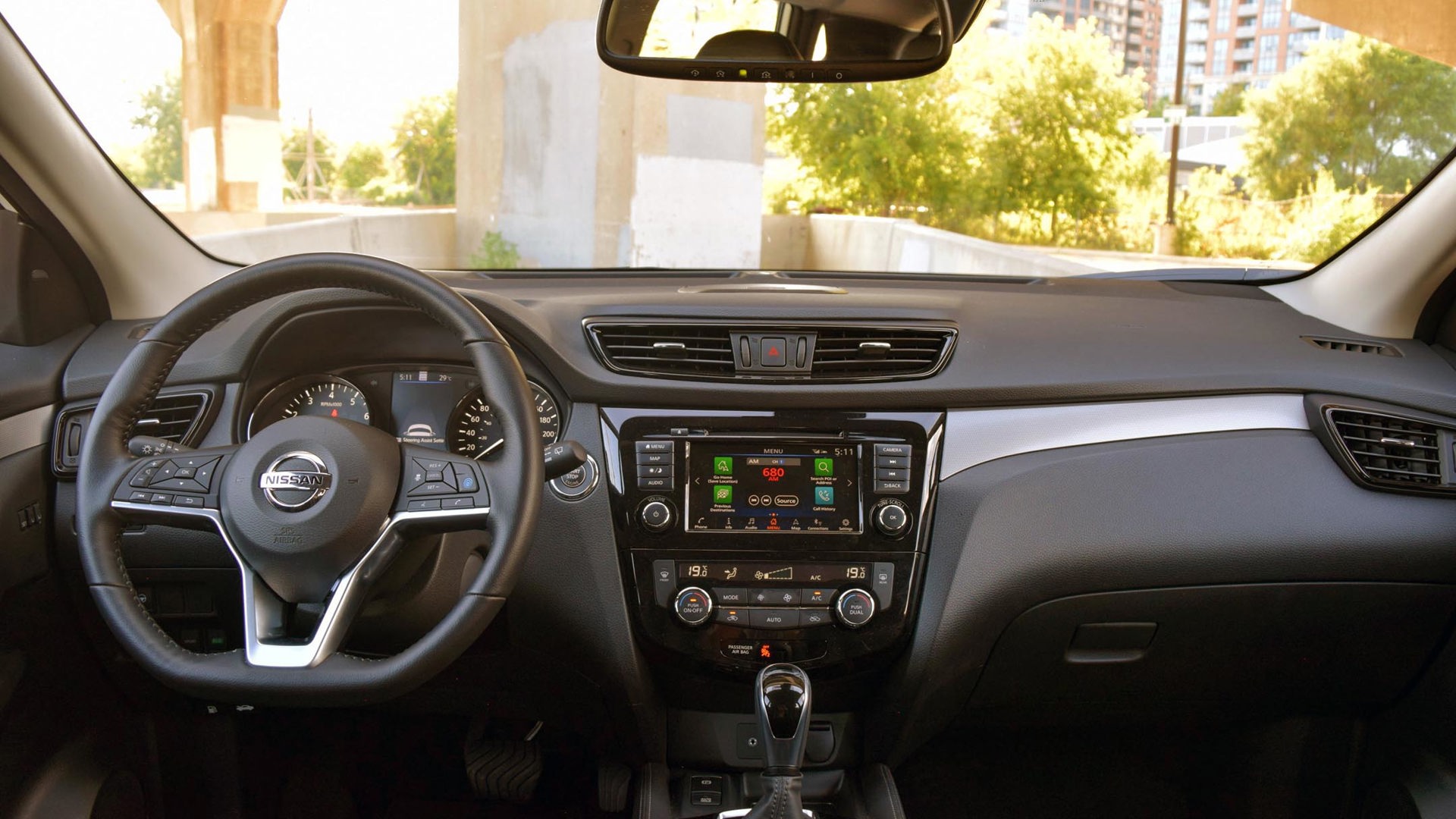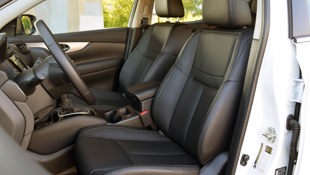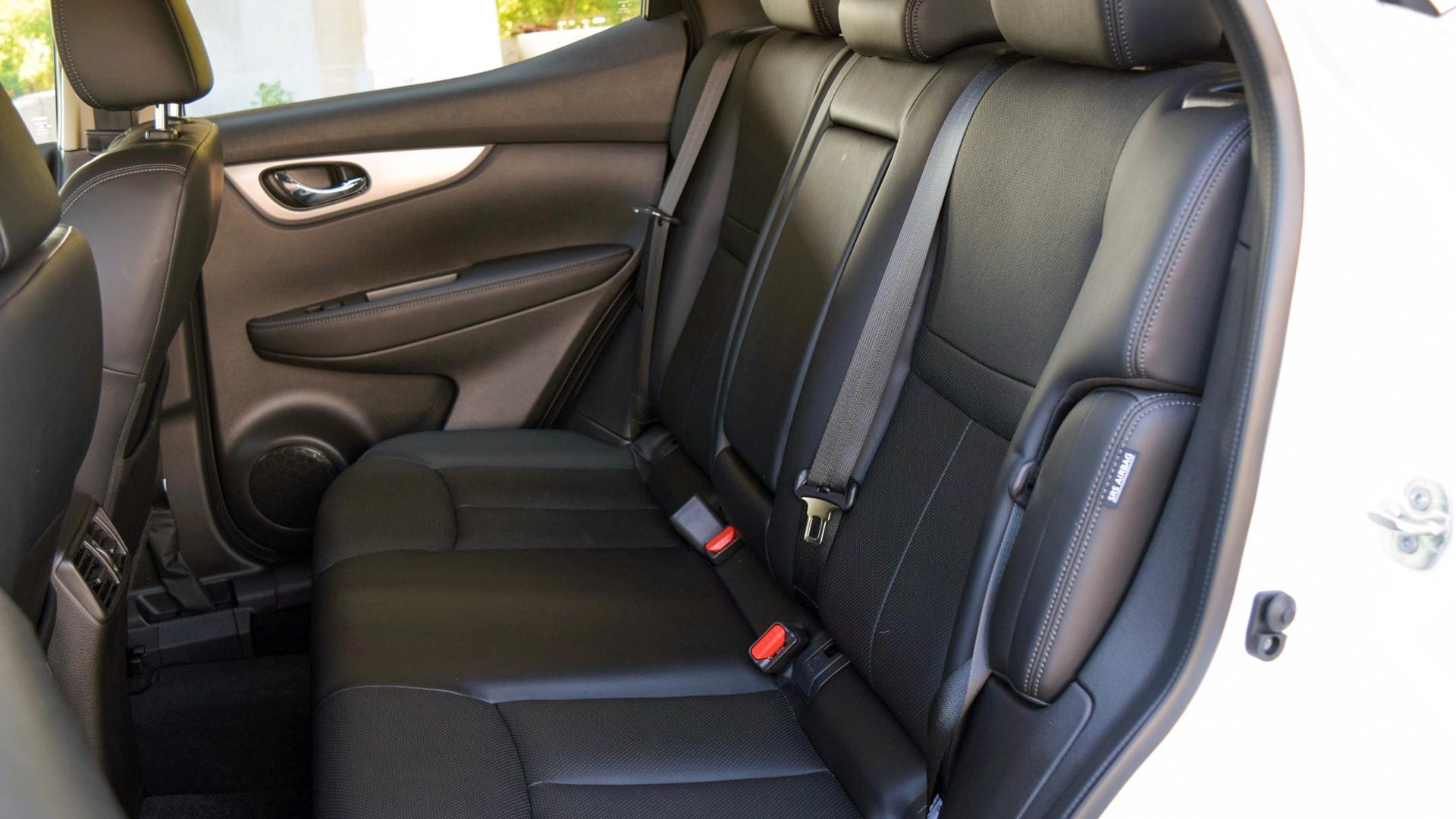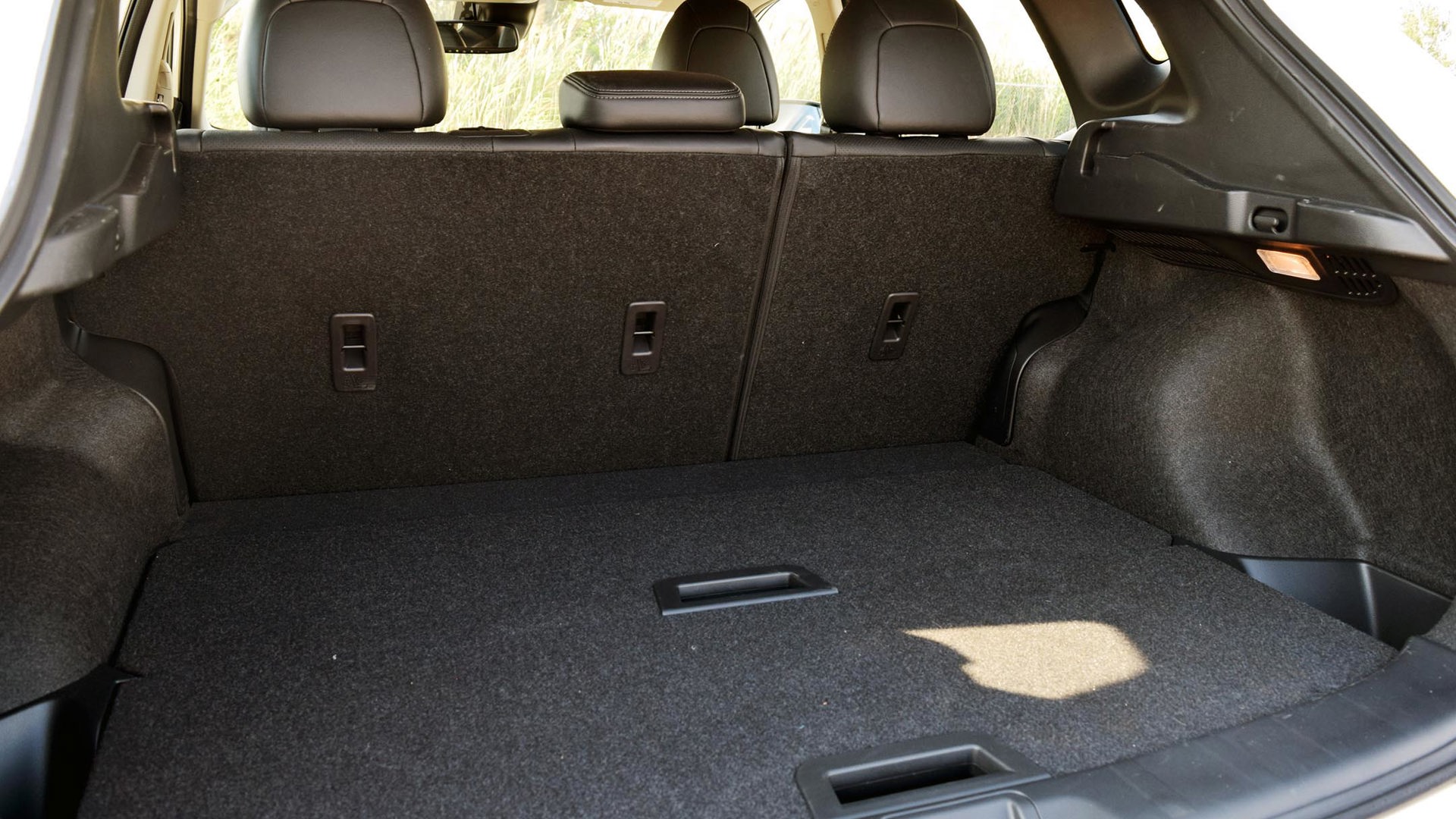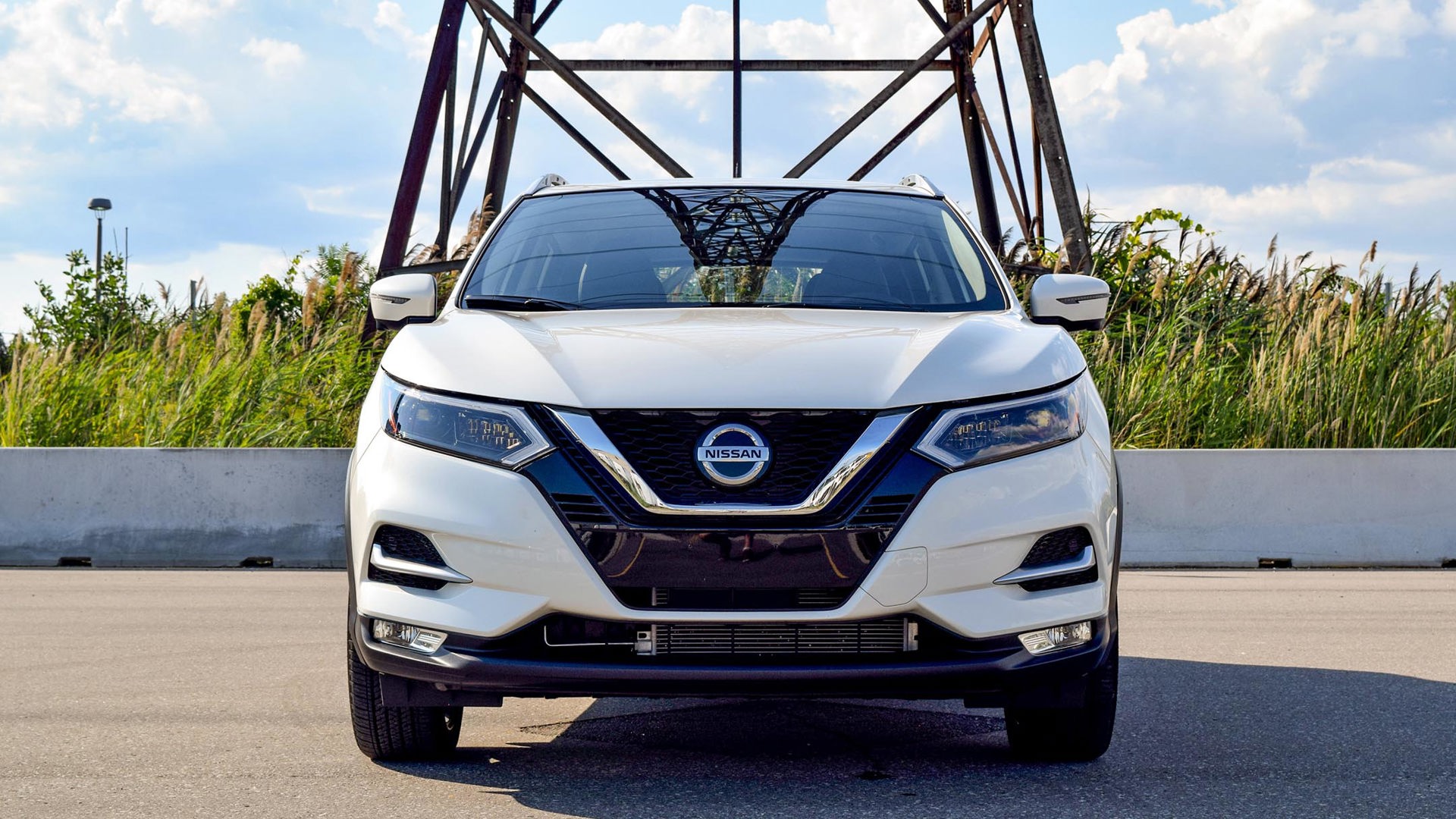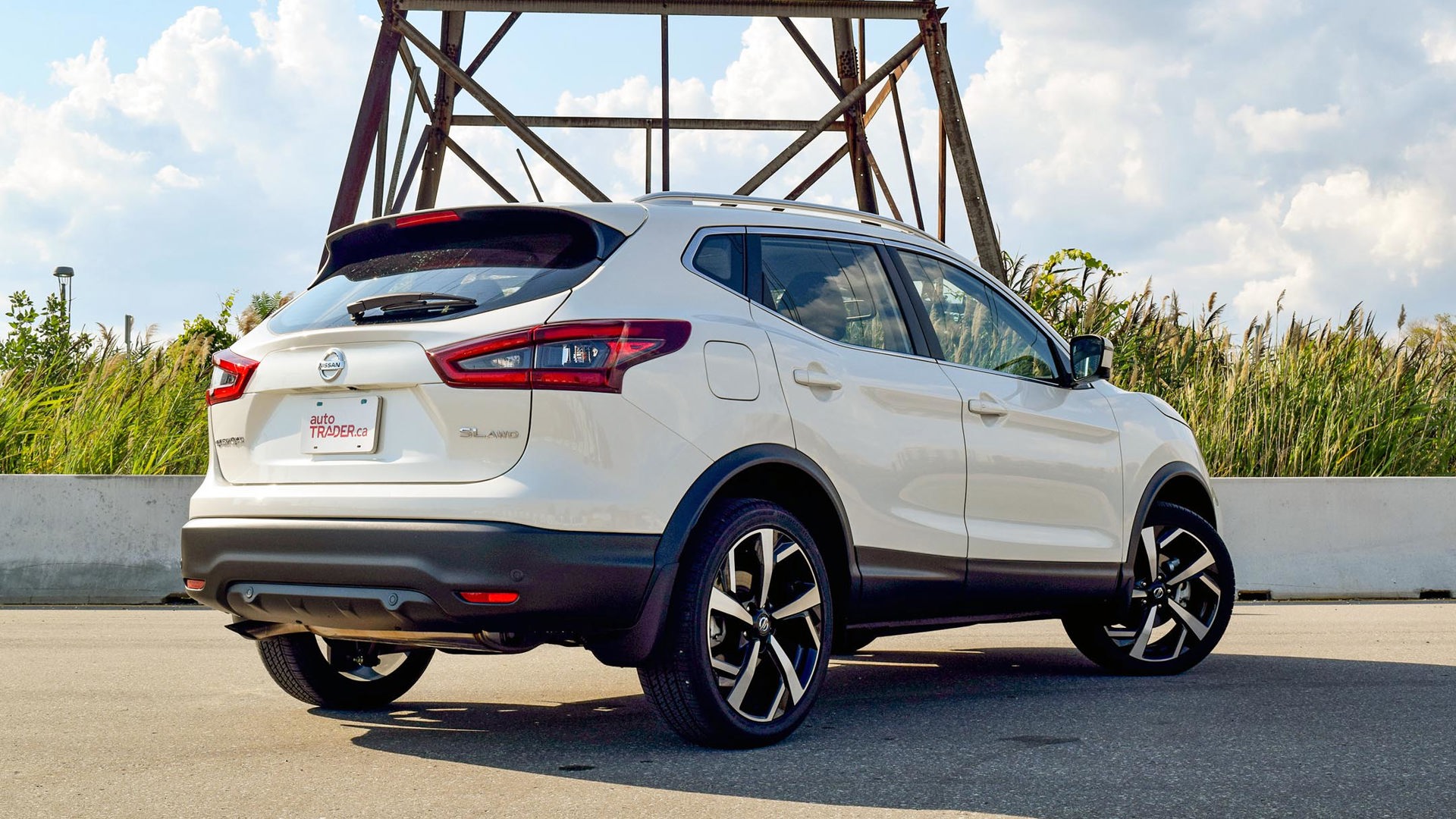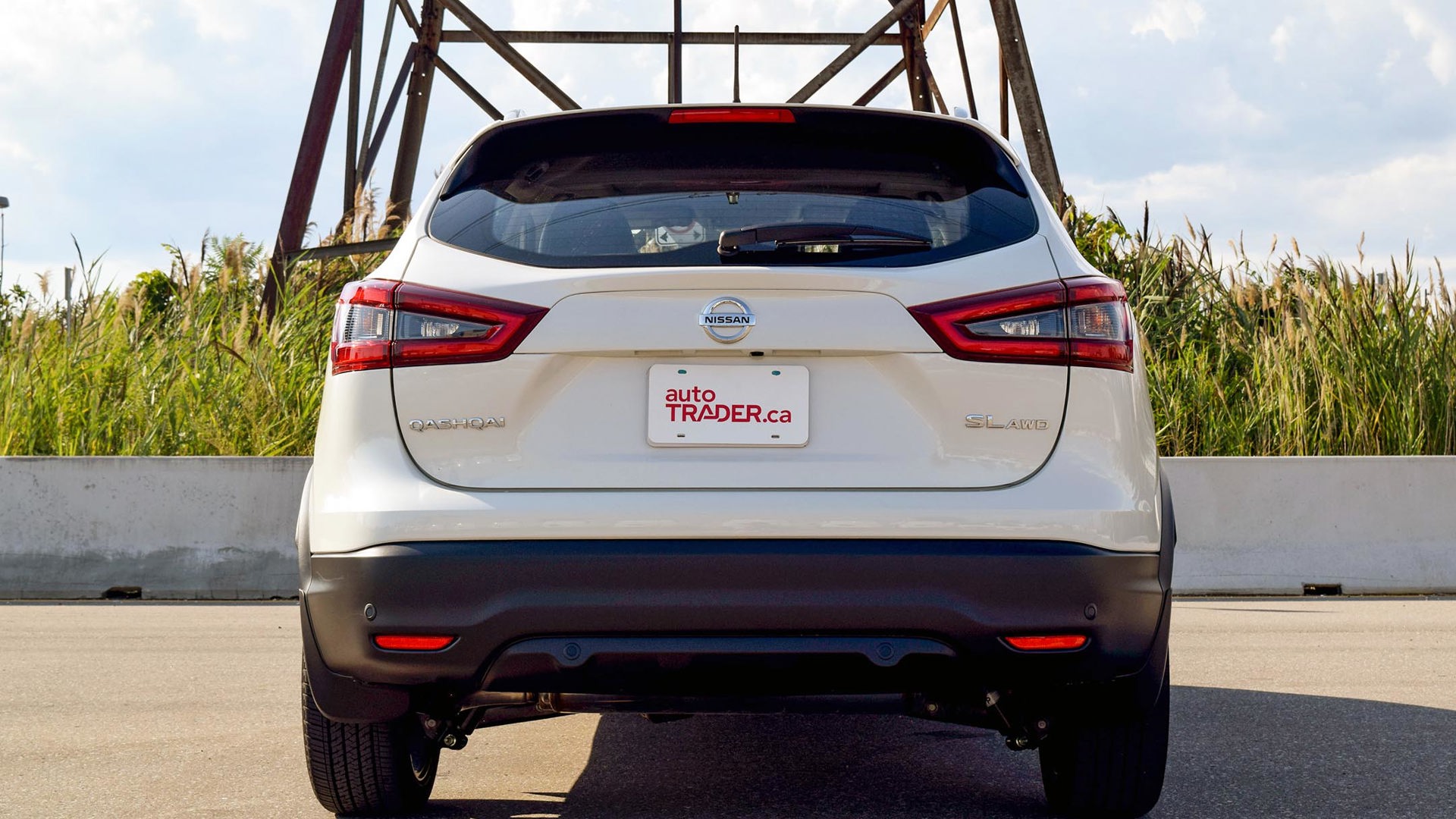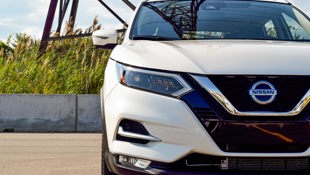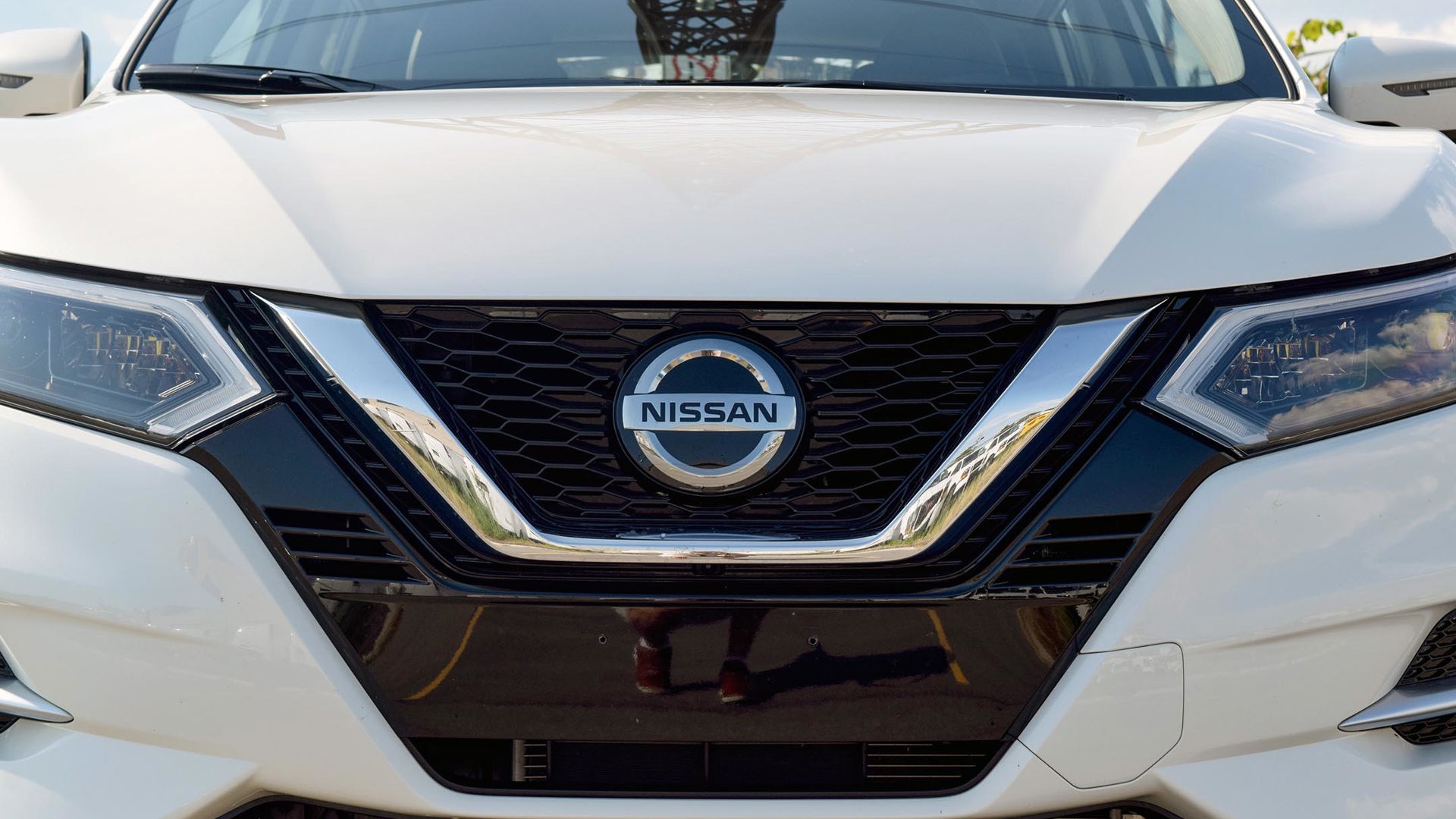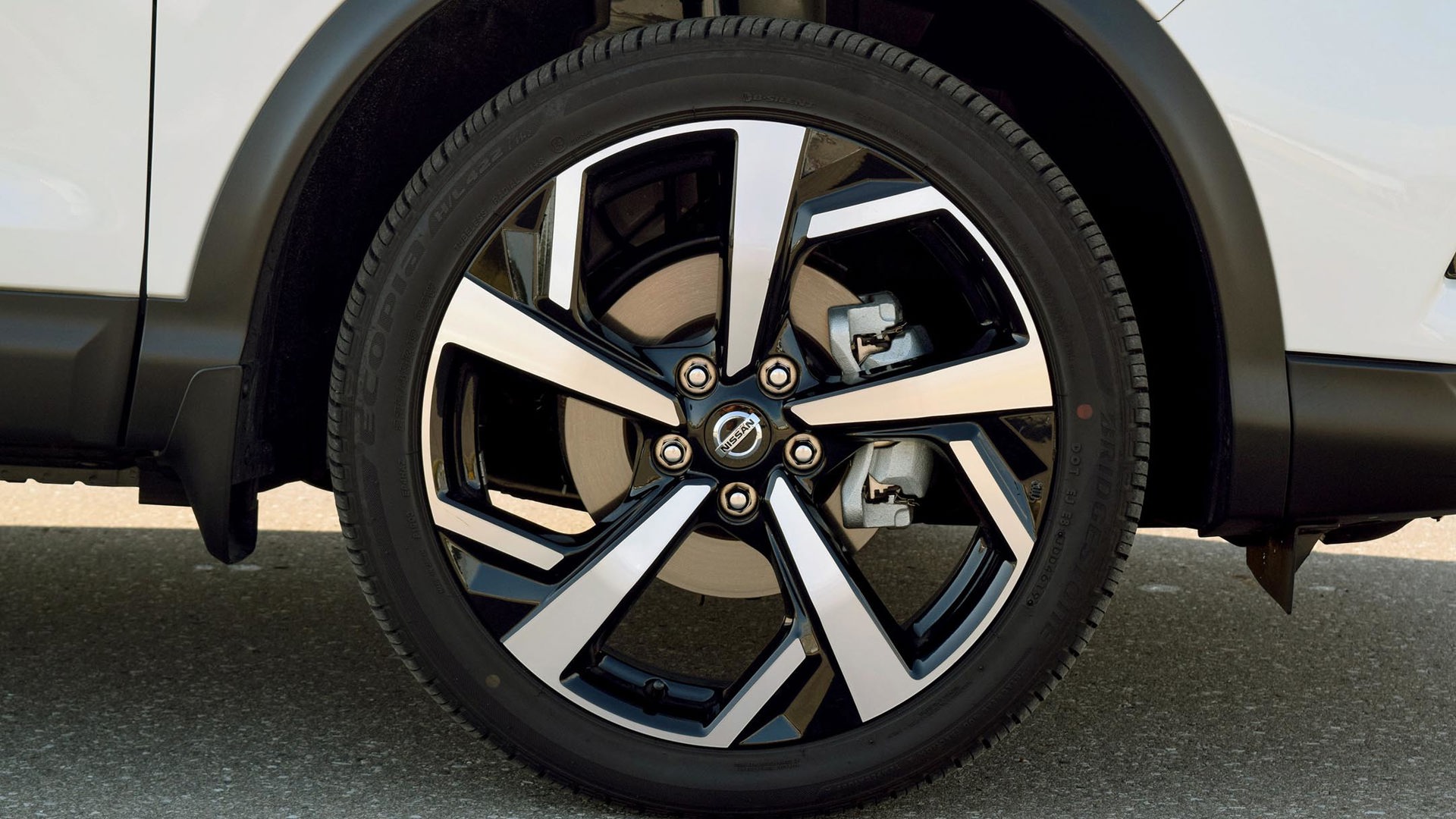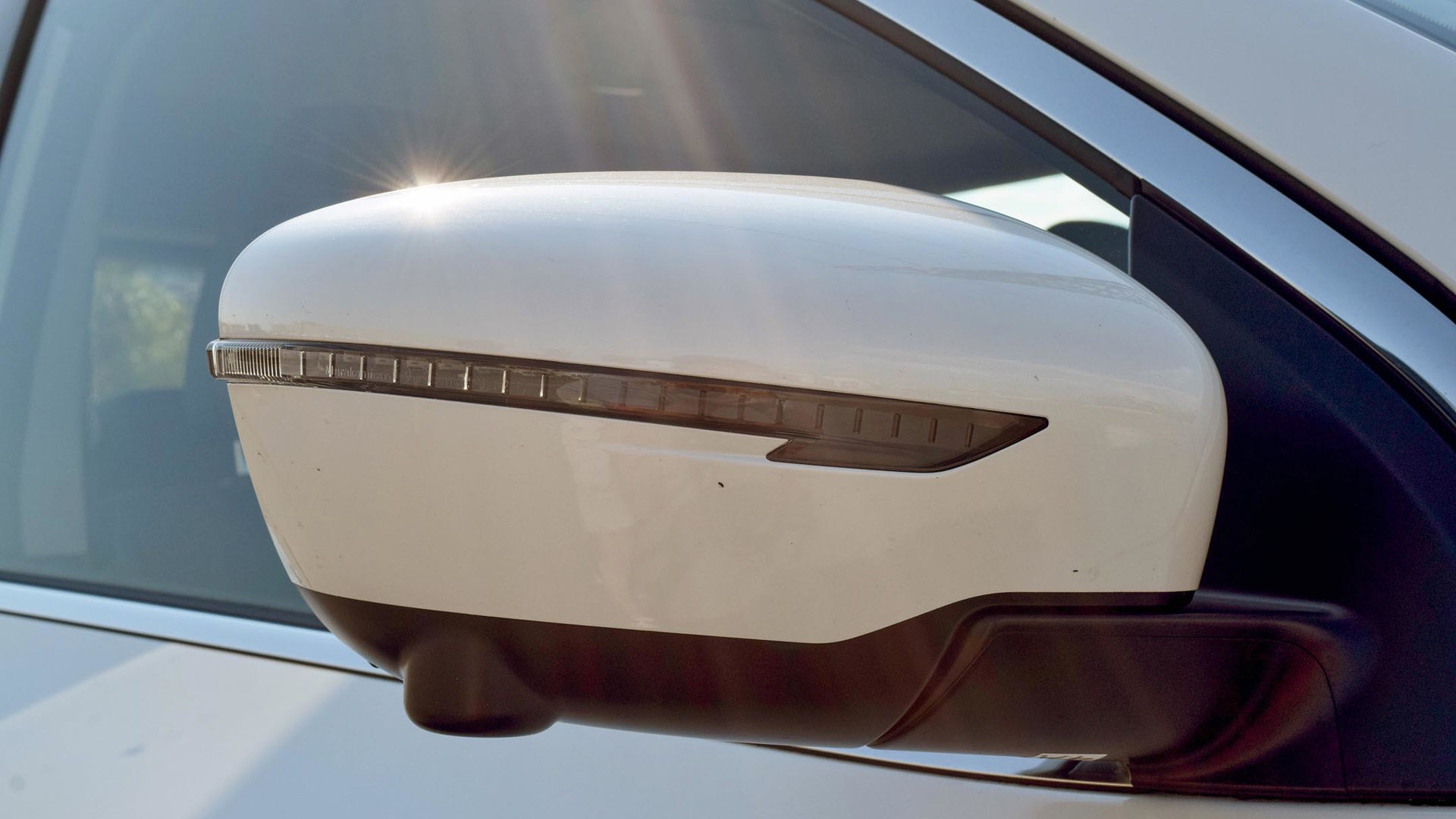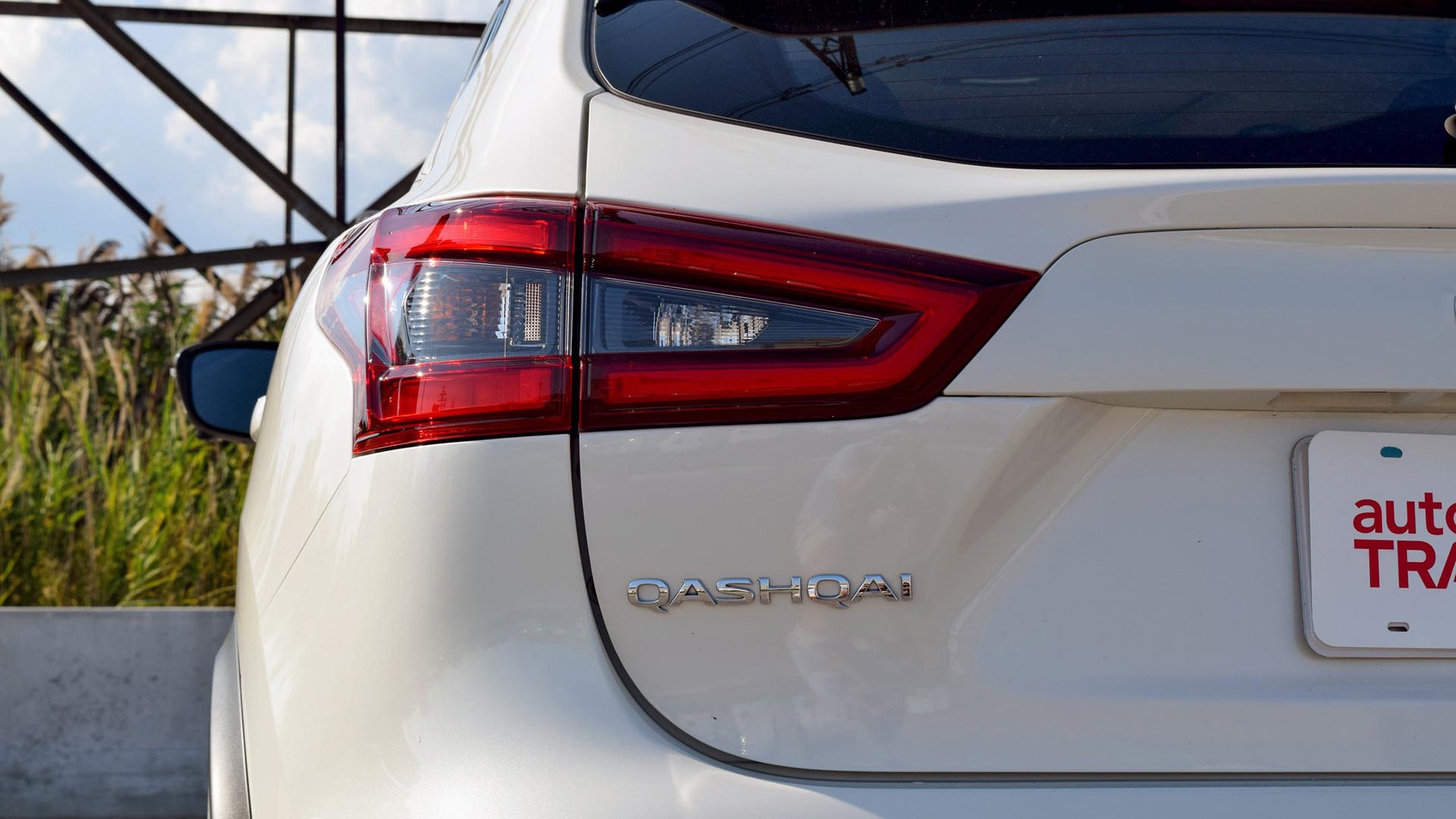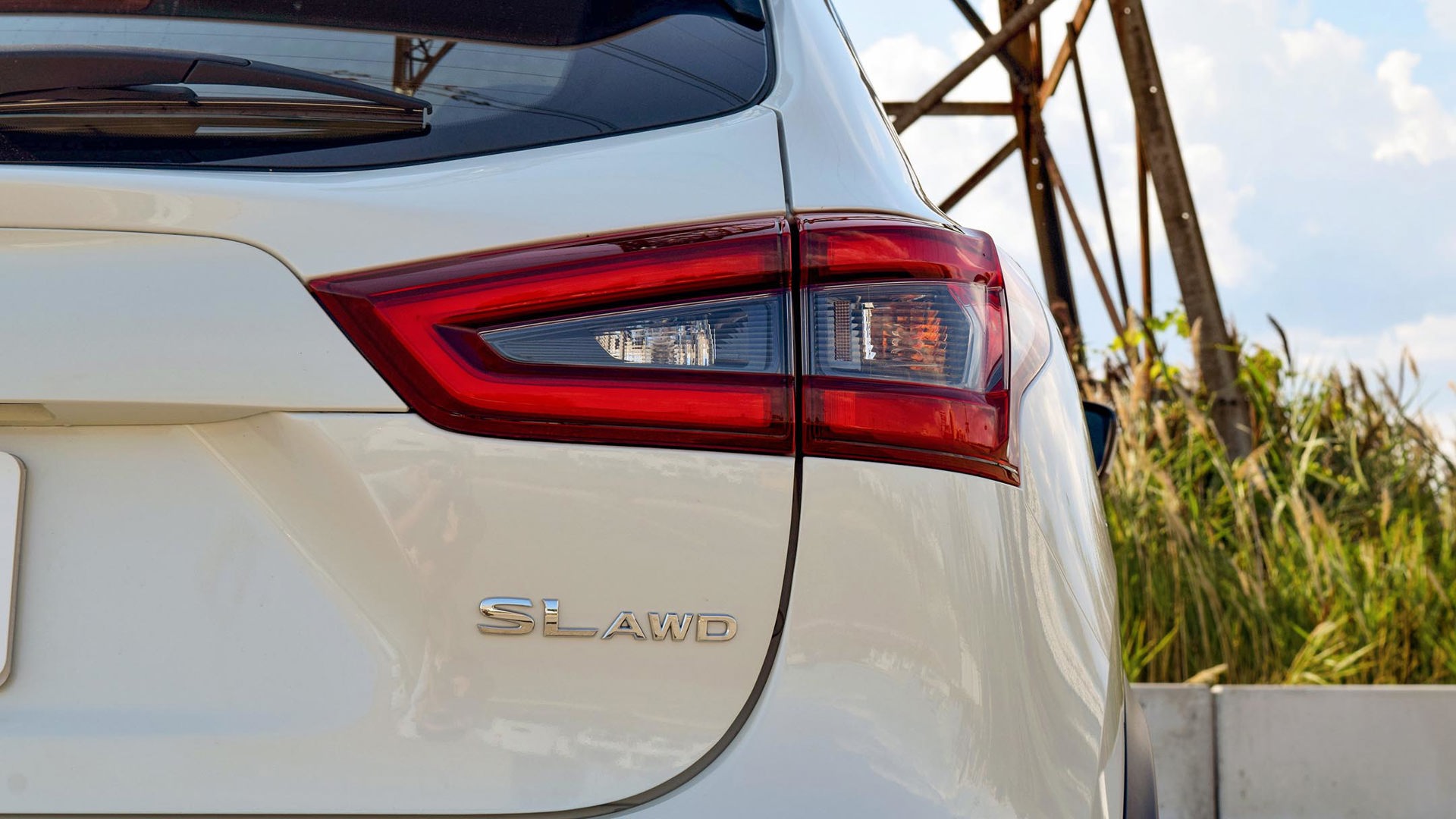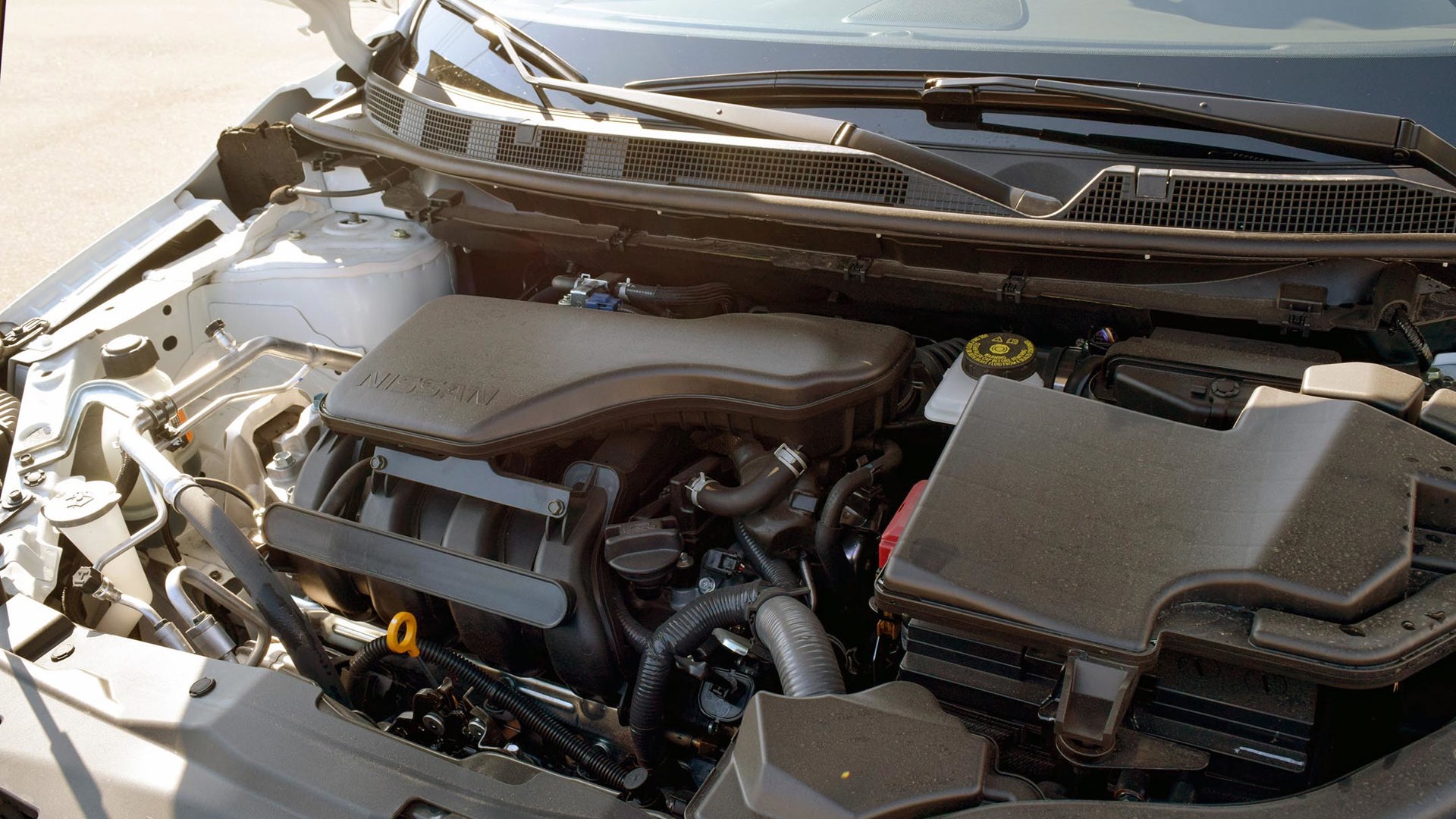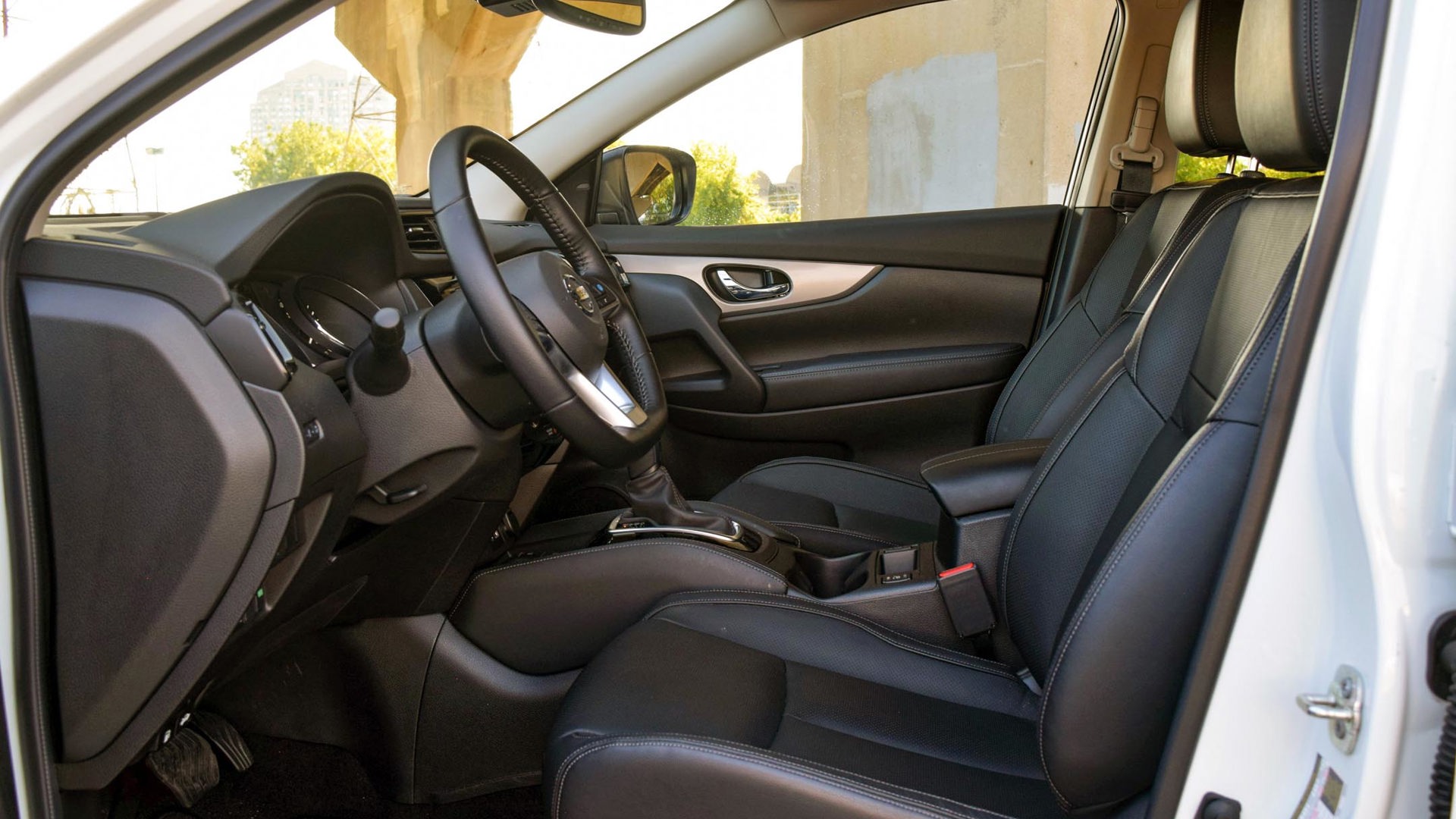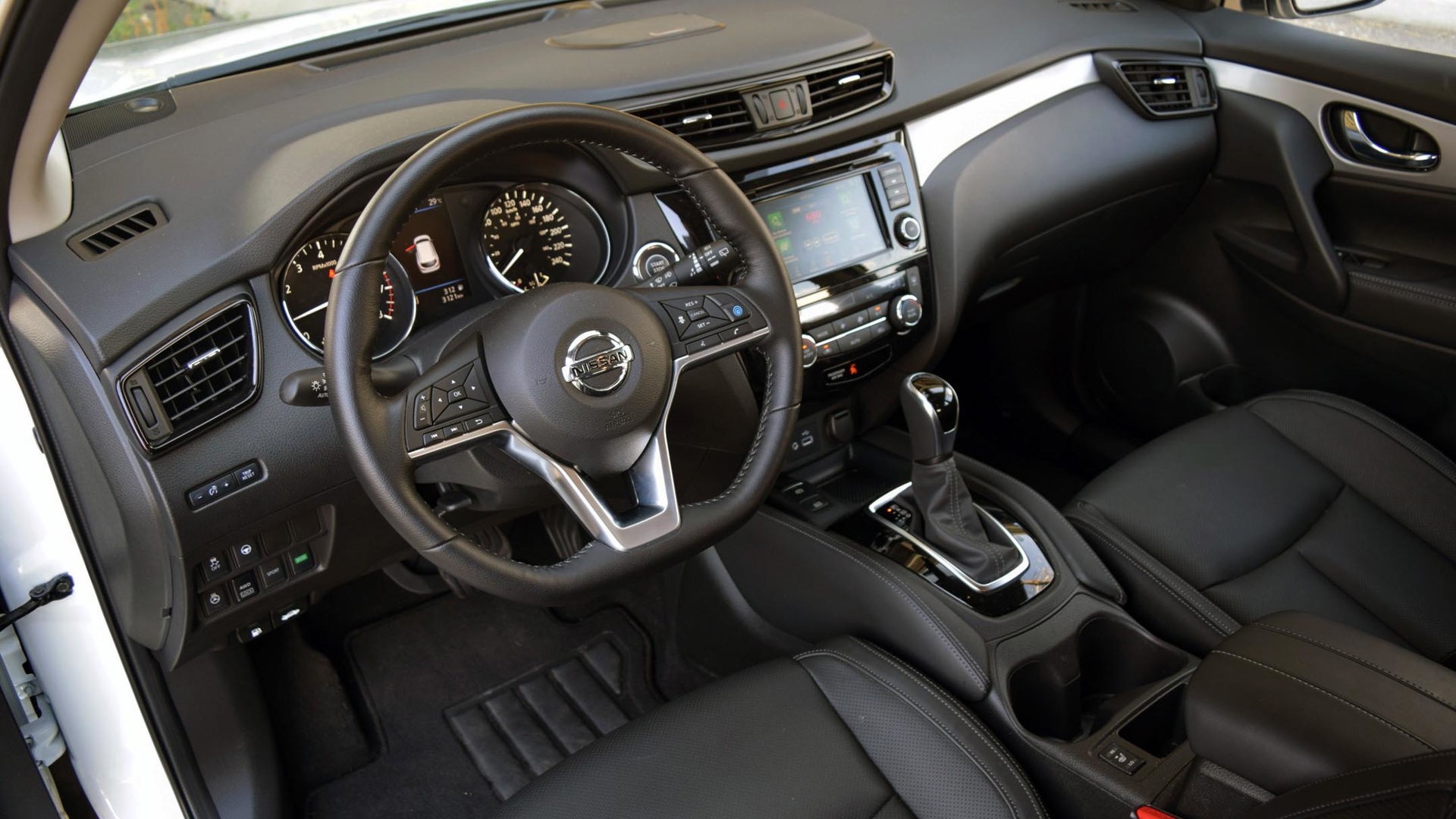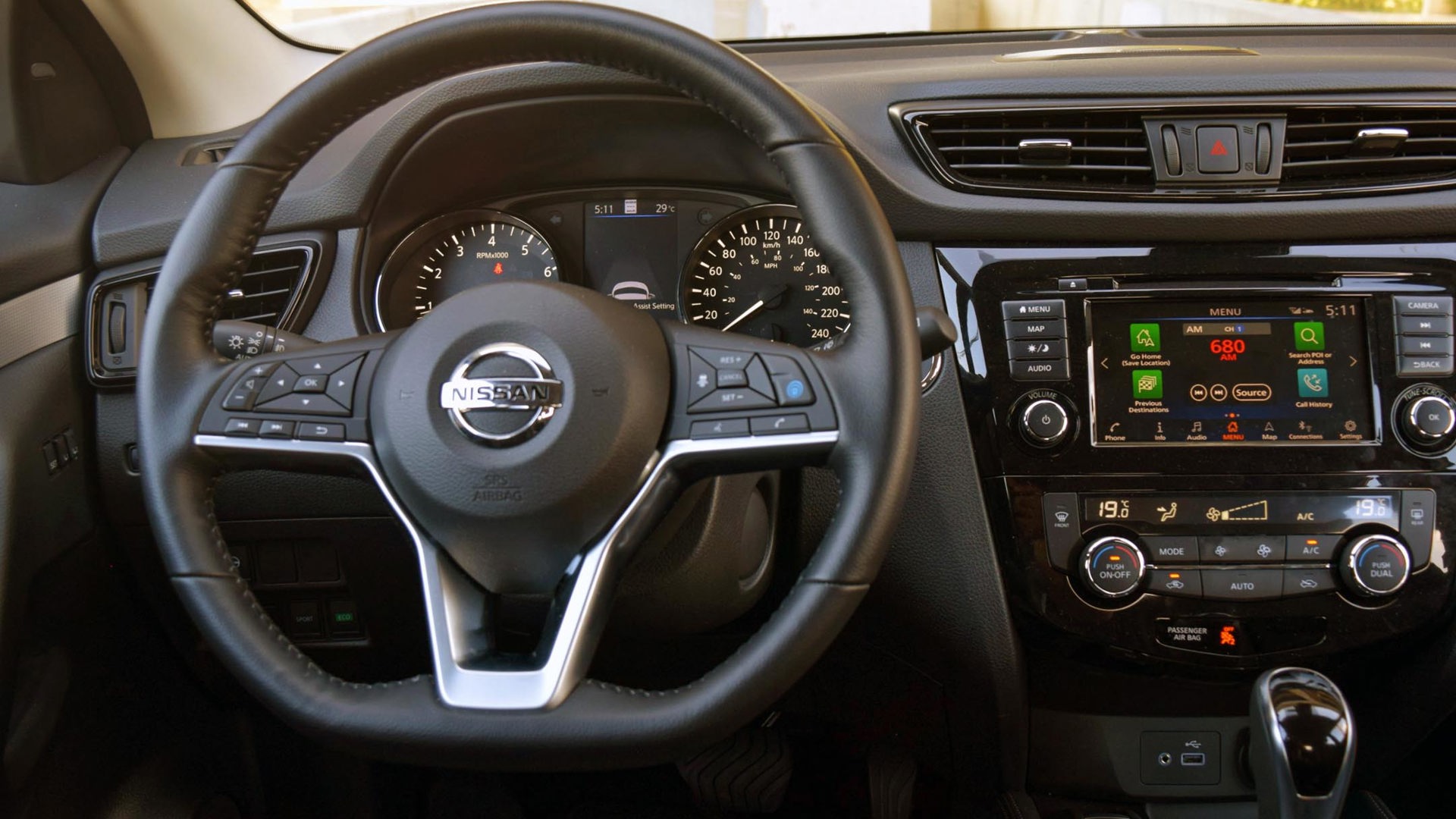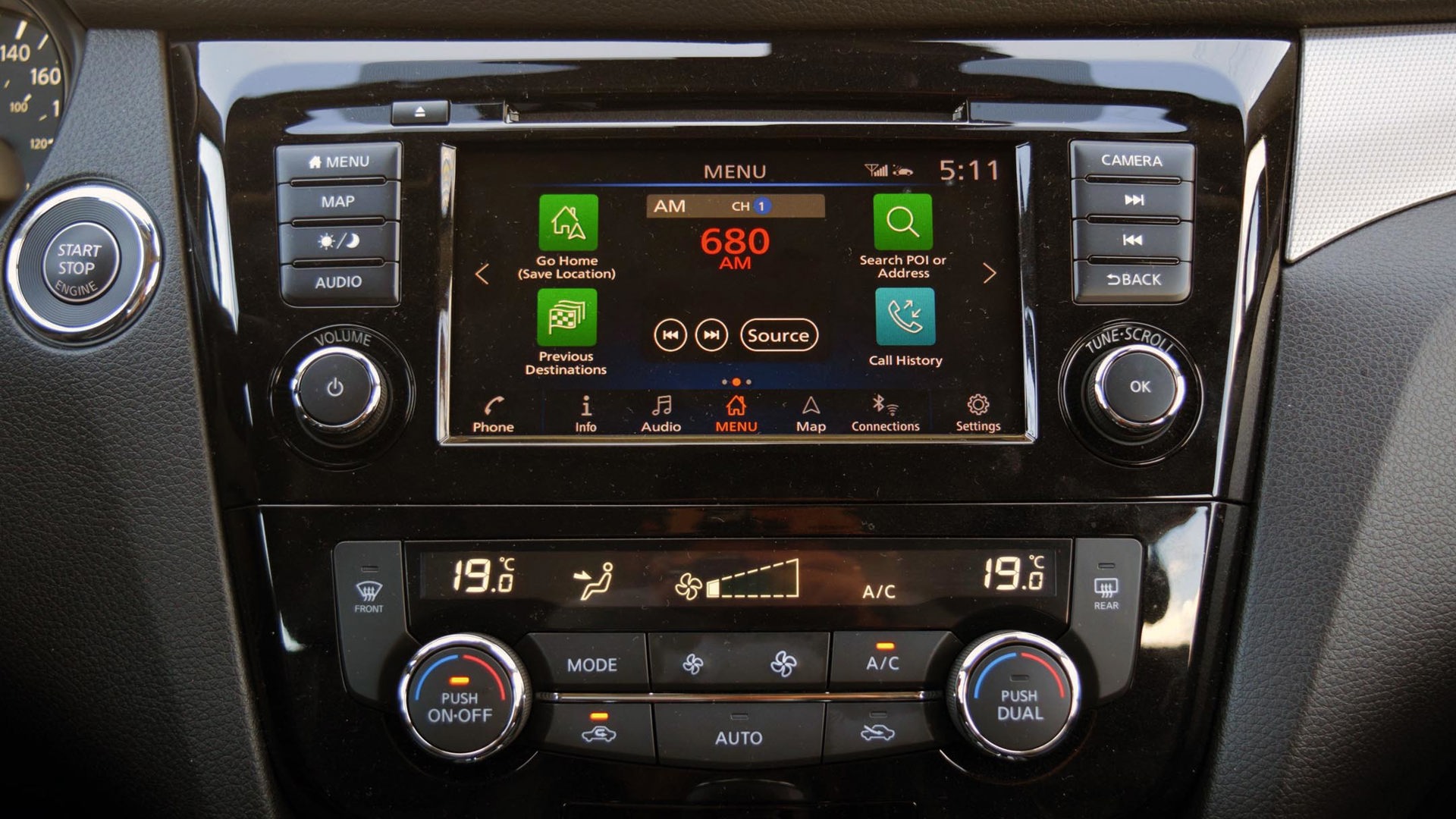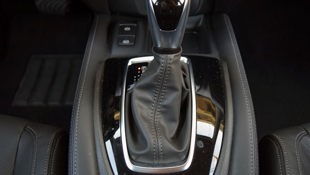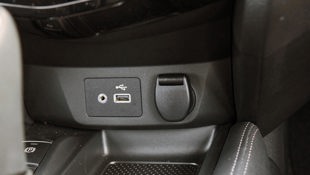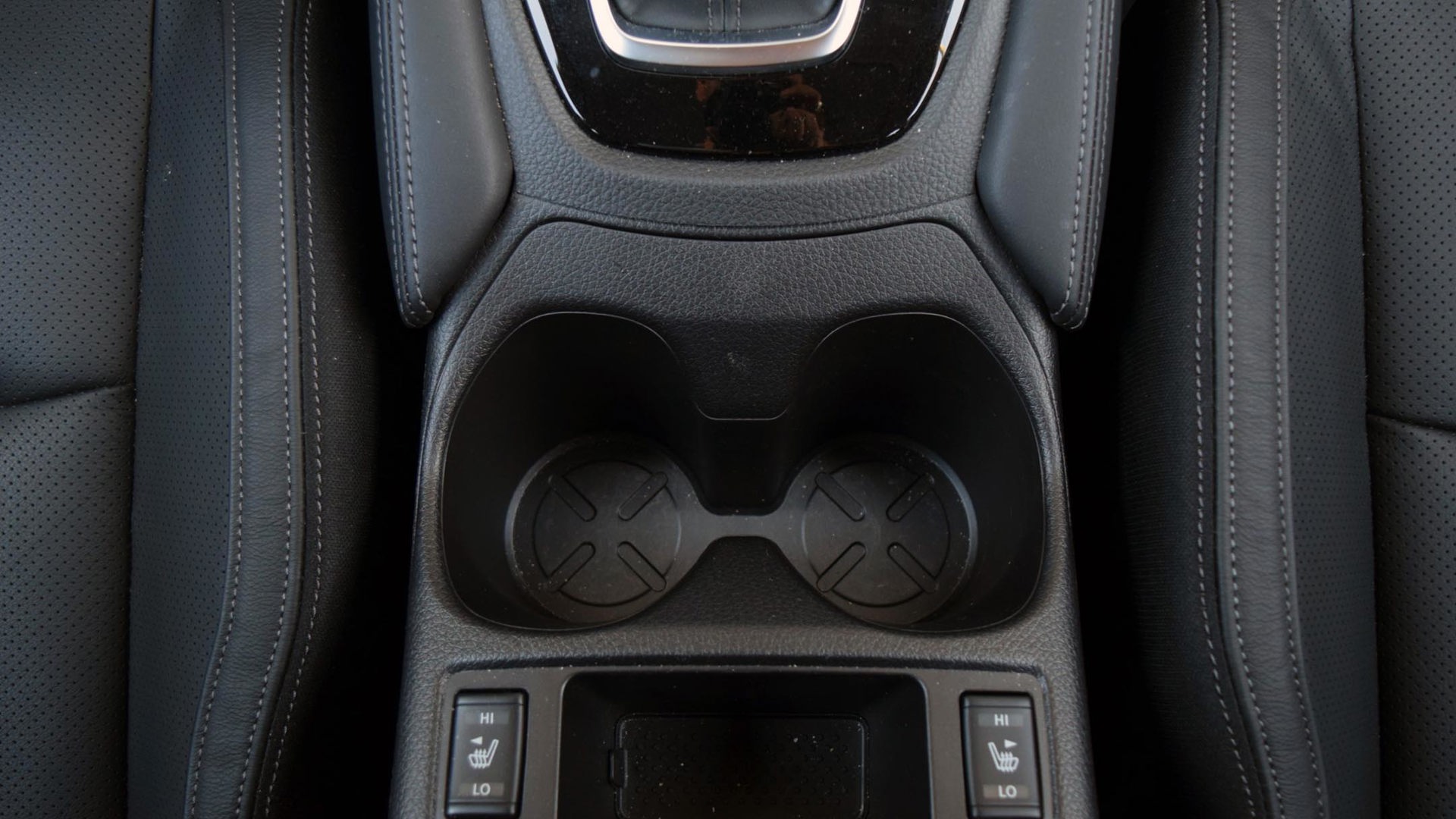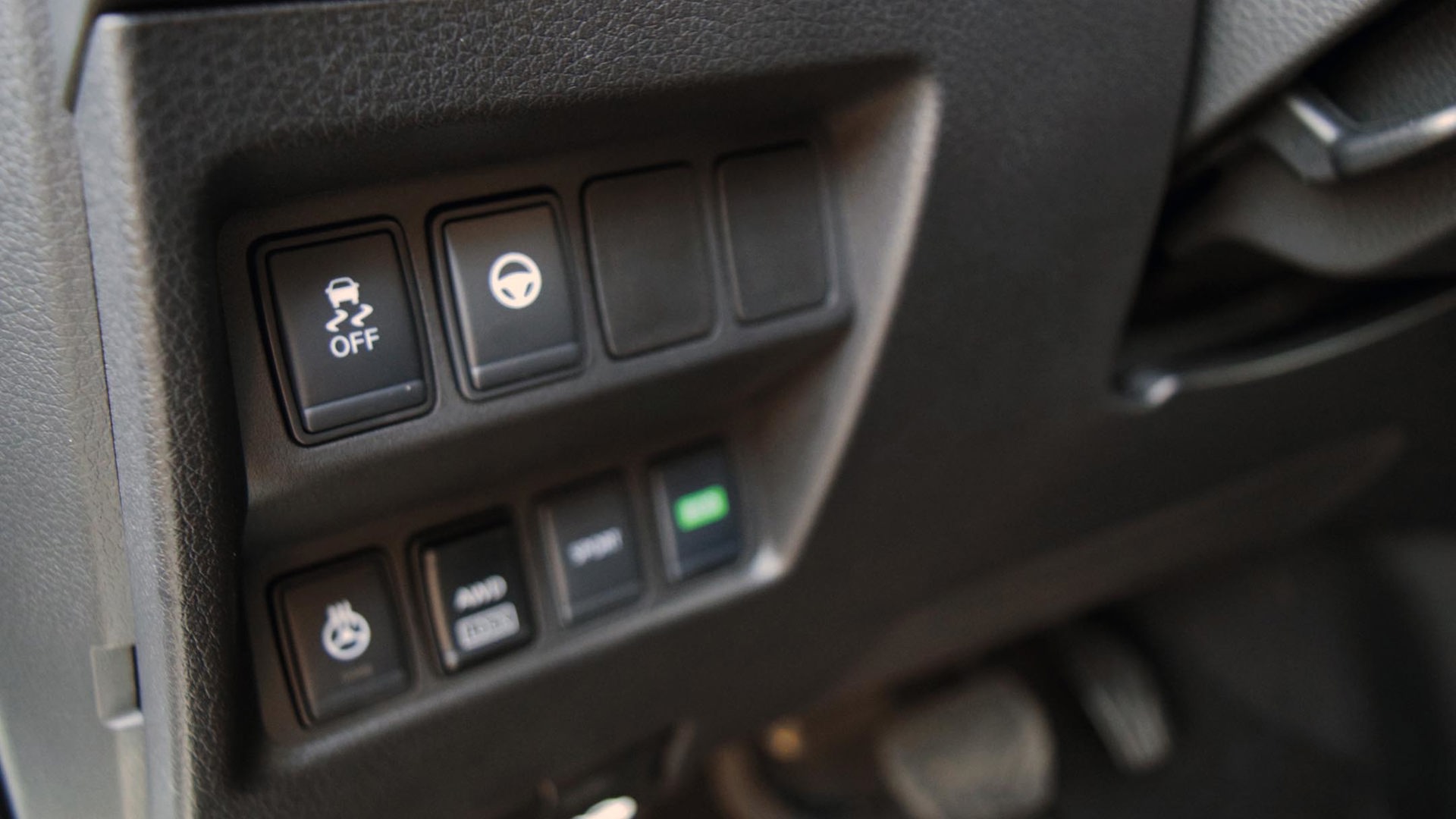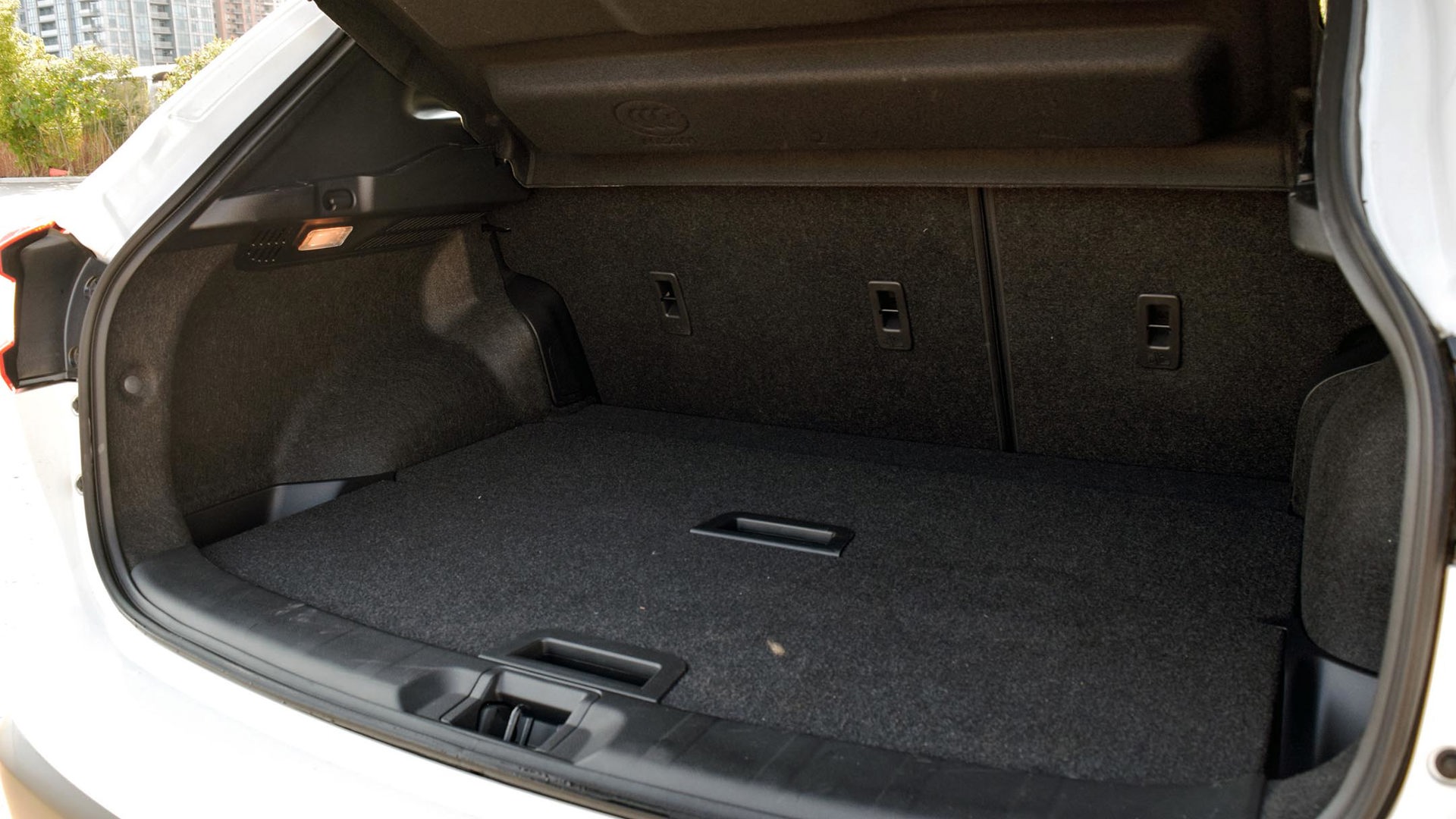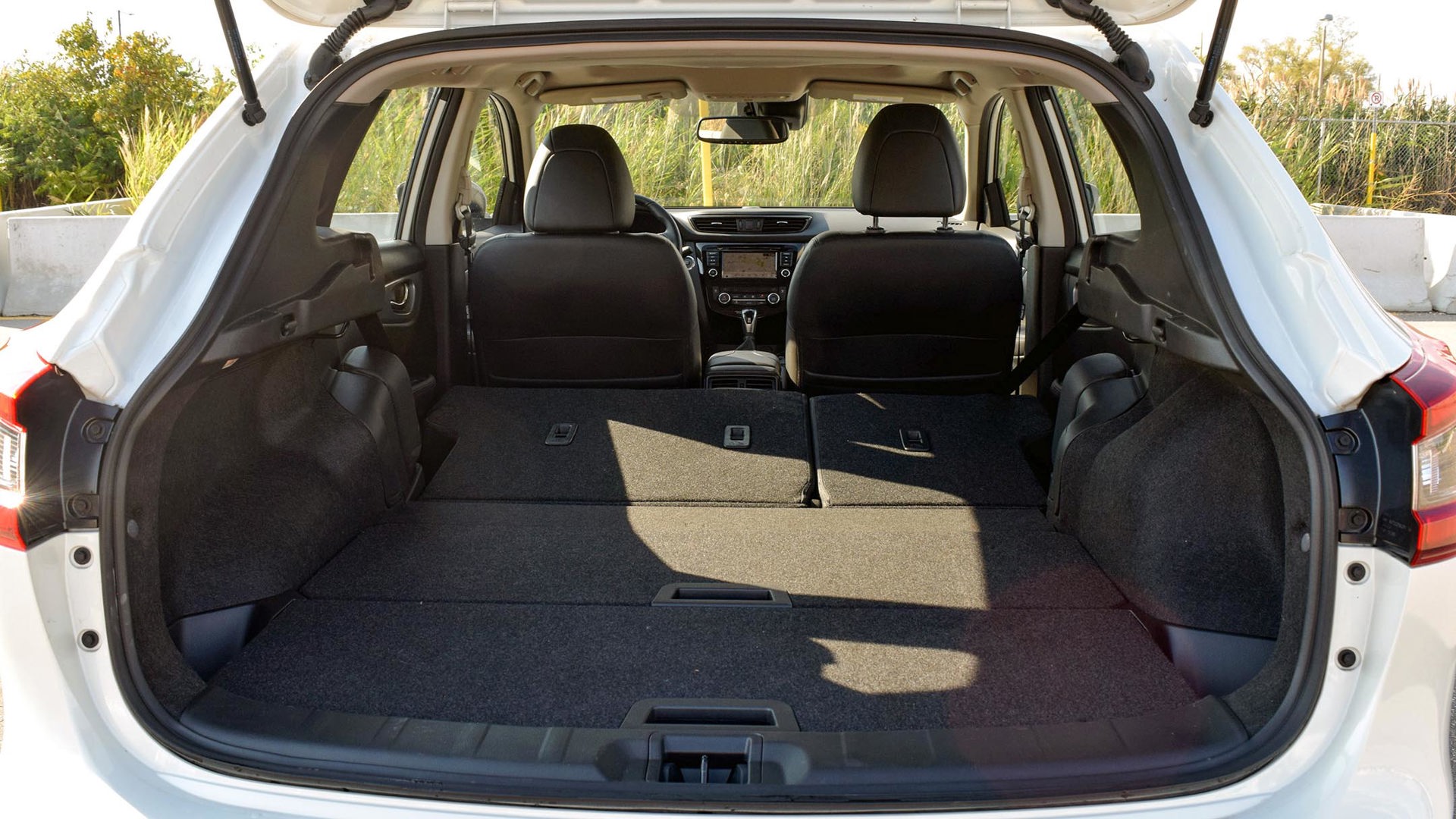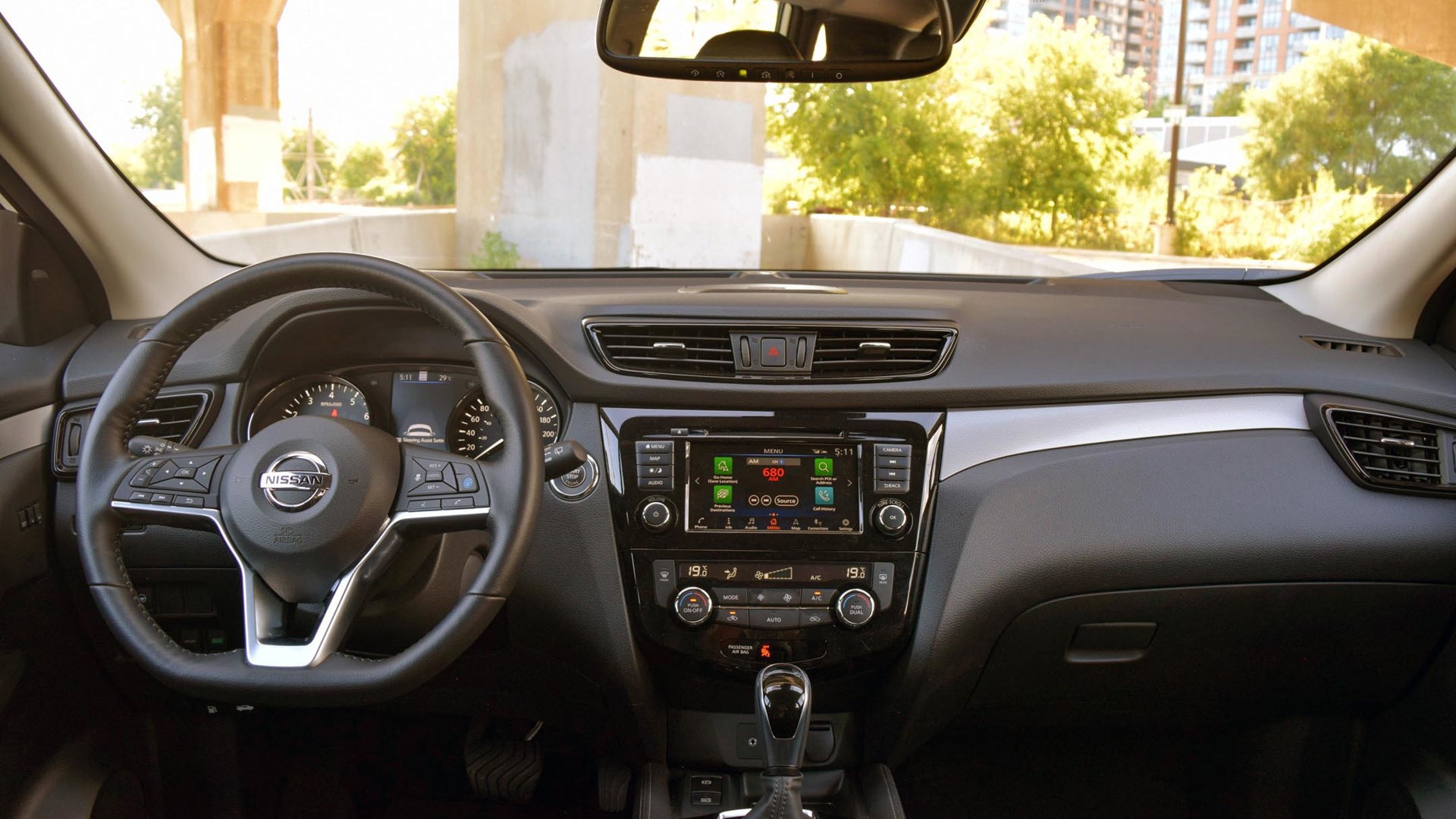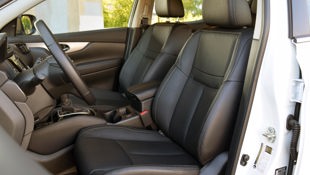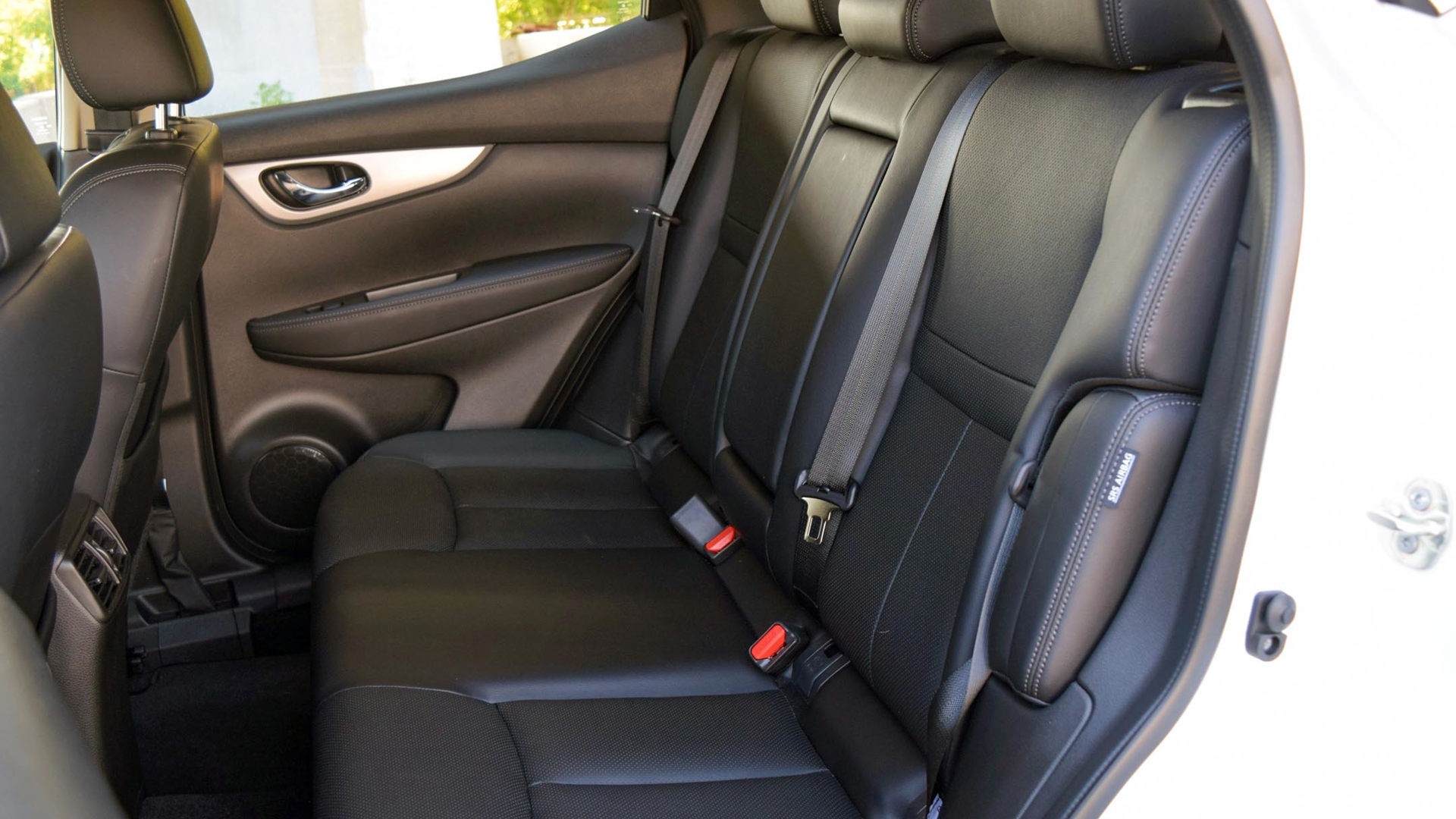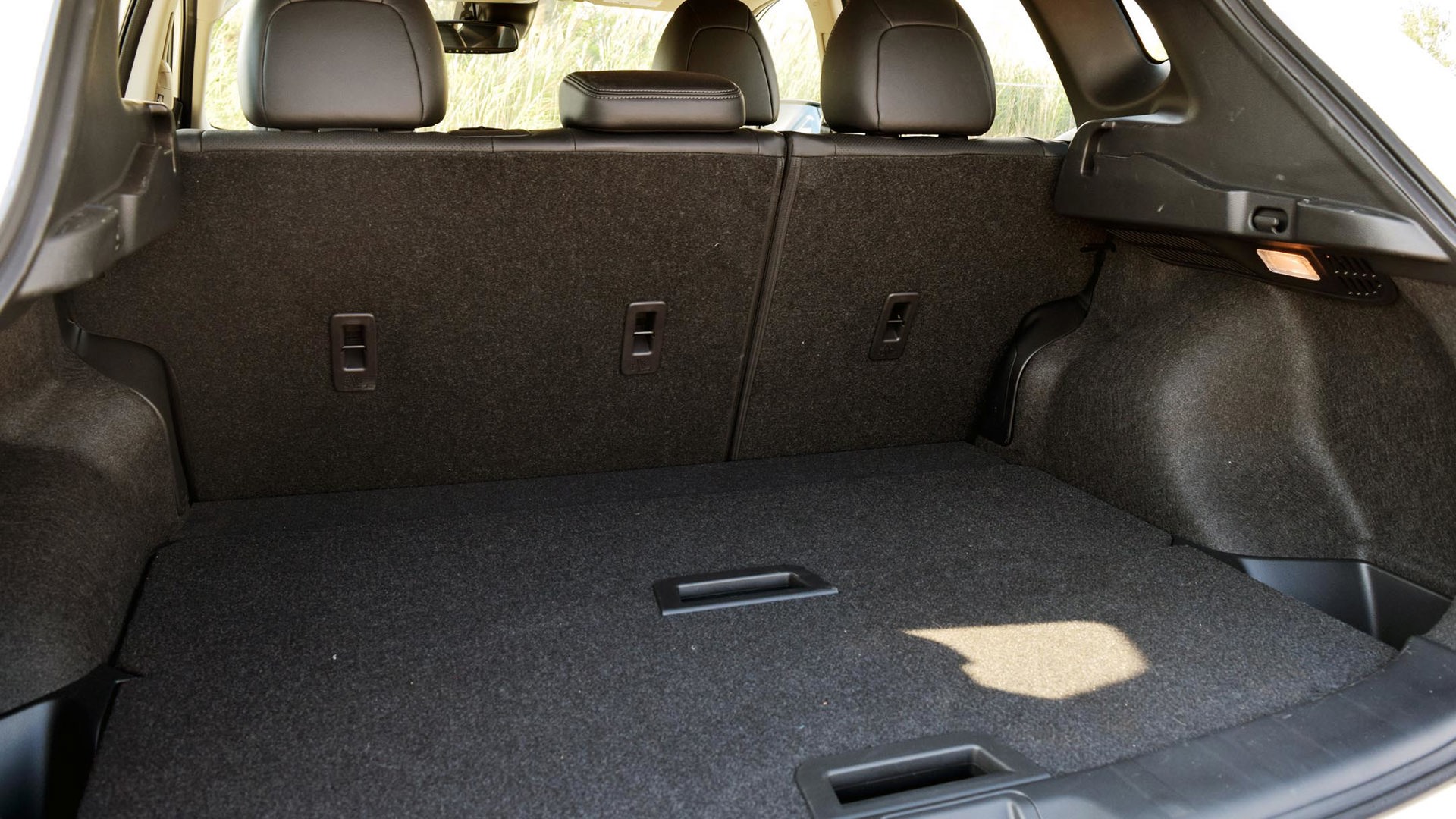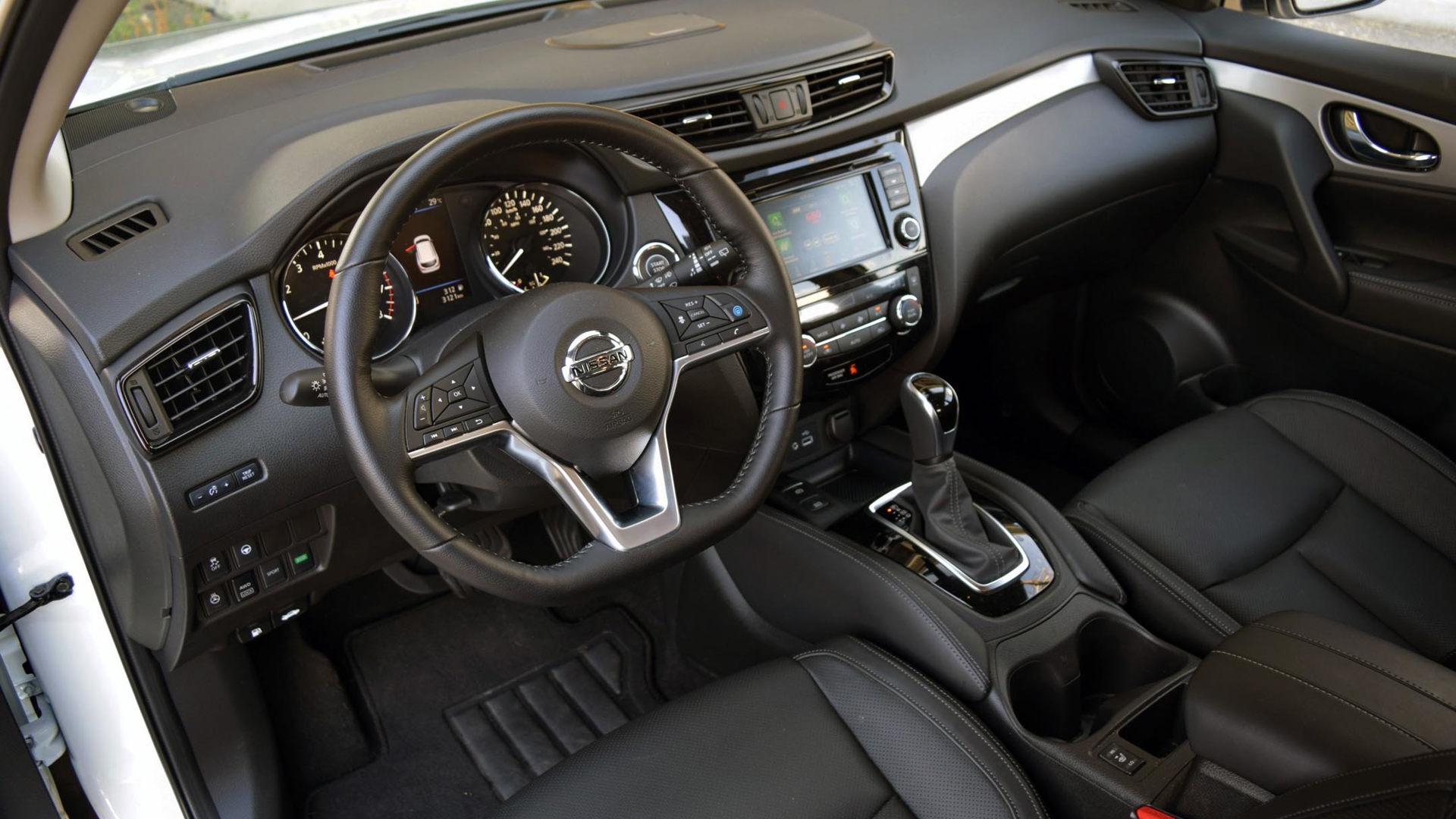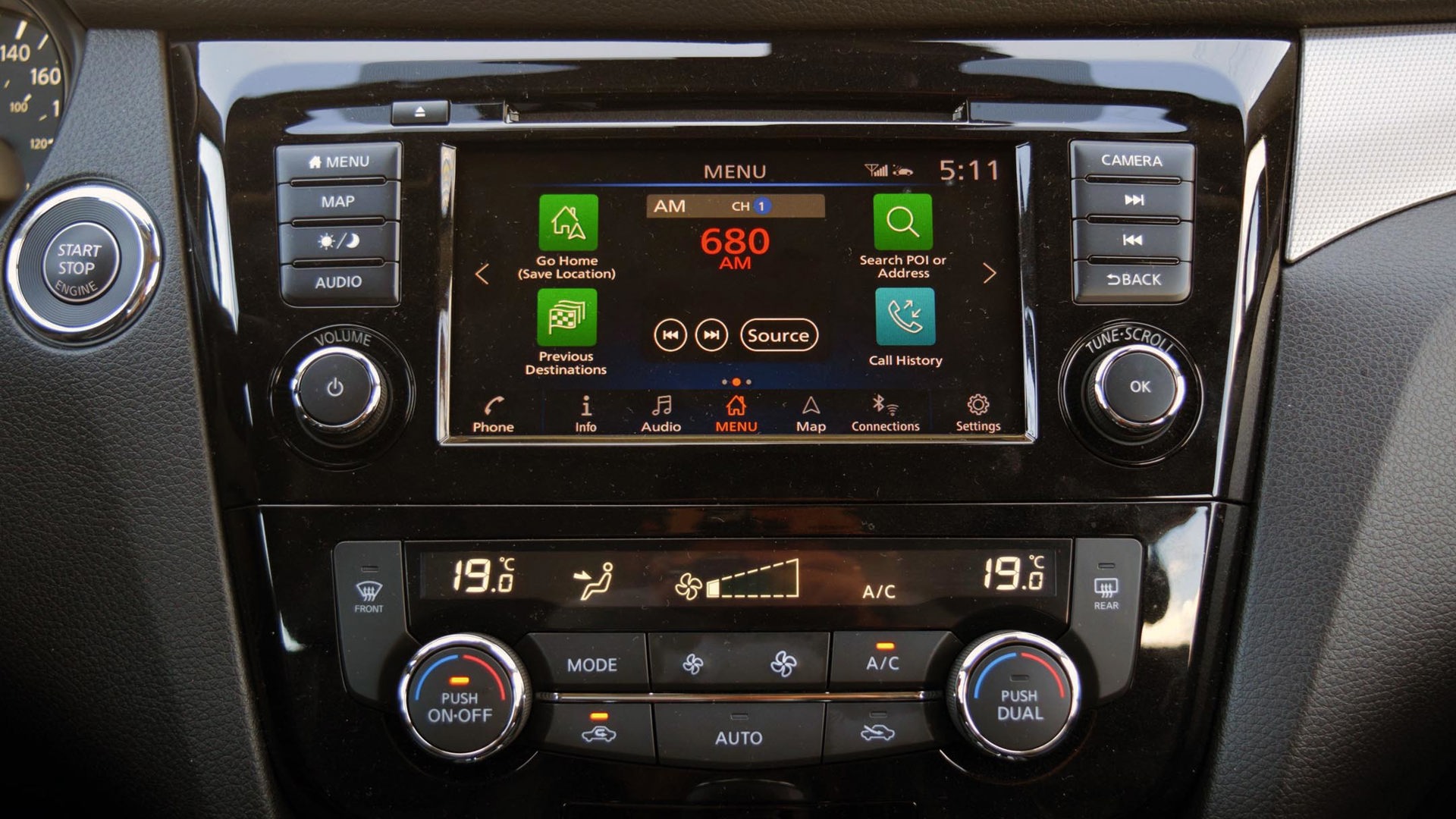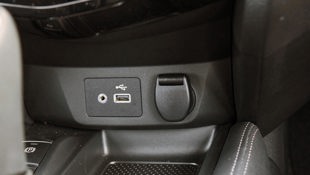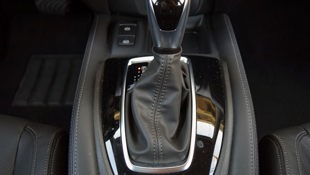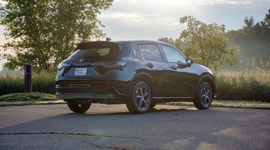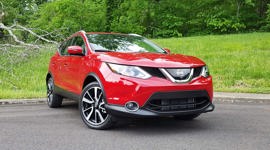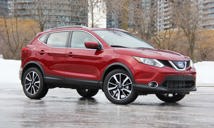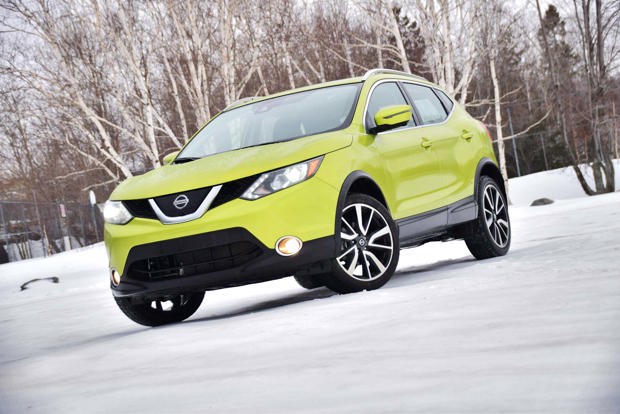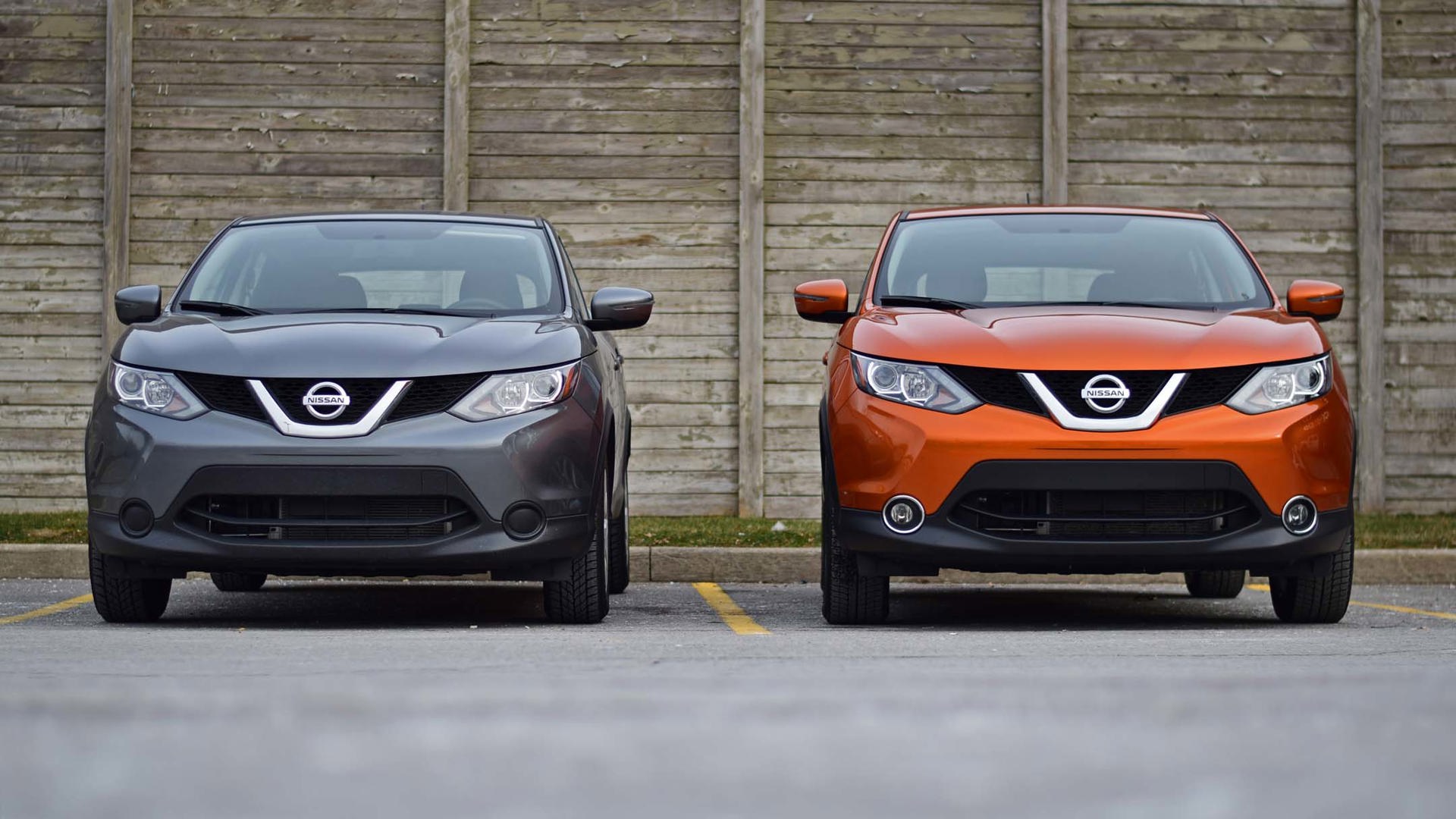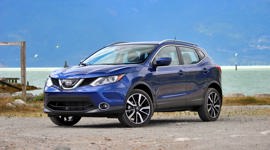 AutoTrader SCORE
AutoTrader SCORE
-
STYLING6/10
-
Safety8/10
-
PRACTICALITY8/10
-
USER-FRIENDLINESS7/10
-
FEATURES7/10
-
POWER7/10
-
COMFORT7/10
-
DRIVING FEEL6/10
-
FUEL ECONOMY8/10
-
VALUE7/10
Small crossovers have been getting better and better these days, with their fair share of features and creature comforts. While the 2020 Nissan Qashqai has seemingly been outdone by newer competitors, the automaker has done quite a lot to ensure it isn’t left behind.
Power: 7/10
A few crossovers in this class offer impressive power figures, and unfortunately the Qashqai isn’t among them. Under the hood is a 2.0L four-cylinder engine with peak output rated at 141 hp at and 147 lb-ft of torque. This motor is paired to a continuously variable transmission (CVT), which works well in most conditions. The engine doesn’t feel particularly gutsy, as it just buzzes along. Unfortunately, the CVT can’t work any miracles either, and it pegs the revs at max tilt trying its best to eke out as much momentum as possible, but the Qashqai doesn’t speed up in any particular hurry.
There are a few drive modes to help customize the experience on the road, but only one truly stands out: an all-wheel-drive (AWD) lock function. In normal operation, the AWD system in the Qashqai varies the power split between the front and rear wheels, and generally it prefers the ones in the front to improve fuel consumption. However, the AWD lock mode in the Qashqai sets up a locked split ratio, ensuring all four wheels are getting power. This is mainly used at low speeds in rough terrain and will be a handy feature when the snow begins to pile up.
Fuel Economy: 8/10
AWD models of the Nissan Qashqai are rated at 9.0 L/100 km in the city, 7.7 on the highway, and 8.4 in combined driving. This makes the Nissan slightly less efficient than rivals like the Subaru Crosstrek, and slightly more efficient than the Hyundai Kona. It’s not, however, the worst in the segment, with the Jeep Compass rated 1.0 L/100 km more combined.
Driving Feel: 6/10
Firing up the Qashqai and setting off, you don’t get the same eagerness or enthusiasm found in other vehicles in the Nissan range like the smaller Kicks. But the Qashqai doesn’t plod about either. It offers a simple driving experience – one that doesn’t feel engaging, nor is it carefree. Throttle response isn’t extremely energetic, and the light steering feel doesn’t inspire much confidence. While the suspension and ride aren’t too vague, if you push for speed on an on-ramp, you’ll be greeted with a lot of body roll. In these ways the Qashqai pales in comparison to the more responsive and engaging driving dynamics of the Crosstrek and Kona. The Qashqai excels when gently cruising on the highway, as the superb driver assistance features can do the heavy lifting.
Styling: 6/10
Nissan has a mixed design language. Some of the brand’s smaller or more affordable models, like the Kicks and Sentra, have delivered some nice styling without breaking the budget. Their bigger vehicles, like the Murano and Maxima, look elegant and premium. Unfortunately, the Qashqai has a slightly dated design that doesn’t fit in either of these two camps. While the overall design is bland, there are a few details that are worth highlighting, like the wheel design, integrated turn signals in the mirrors, and the LED light signature up front.
Inside, the Qashqai has a clean design but is missing playful details. That is becoming less forgivable, as other vehicles in this class are getting clever touches like contrasting stitched leather in the upholstery. Top trim models can be equipped with different shades of leather, and a bit of a quilted pattern to show off some level of craftsmanship, but it’s a shame to hide it away on the most expensive models.
User Friendliness: 7.5/10
Furthermore, there are a few missteps with the ergonomics and usability inside the Qashqai that are pretty frustrating. For starters, there is a bank of useful buttons hidden below the driver’s side of the dash. The heated steering wheel controls, steering assistance, and drive modes are all difficult to see and reach. Furthermore, while the infotainment system has Android Auto and Apple CarPlay support, the USB port to connect your phone is located in a space that is too small for modern smartphones.
However, Nissan should get credit for making its driver assistance features easy to use and understand. A bright blue button on the steering wheel enables the ProPILOT Assist function, and a clear and legible display in the gauge cluster shows what functions are working. It even shows what the car detects with its various sensors, like the car ahead, or the lane markings. Whenever it struggles to pick up one of these items, it provides a soft beep, rather than a harsh warning, as a reminder to the driver to stay vigilant.
Features: 7/10
Qashqai buyers can expect the usual suspects in terms of features and technology. Base models come with heated seats and a few safety features including blind-spot monitoring and high-beam assist. All models come with a seven-inch colour infotainment system, with Android Auto and Apple CarPlay.
You’ll find features like dual-zone automatic climate control and a heated steering wheel, as well as a sunroof, on the SV model – the next step up in the trim levels. Beyond the SV is the SL, which adds features like leather upholstery, a 360-degree camera, bigger wheels, and the ProPILOT Assist driver assistance and safety suite. The SL Platinum gets an upgraded Bose sound system, LED lighting, and a memory function for the driver seat.
Unfortunately, there are no ventilated seats, and Nissan doesn’t offer heated rear seats in this vehicle.
Safety: 8/10
When it comes to safety and driver assistance features, the Qashqai over-delivers. I’m so impressed with the ProPILOT Assist functionality and refinement, which is clearly among the best in the industry, let alone the segment. Only the Crosstrek with its EyeSight suite of driver assistance features is as comprehensive as the Qashqai, and I felt that the Nissan implementation of adaptive cruise control and lane-keeping was more measured and trustworthy; the way it communicates how each component is working is also an advantage.
The Qashqai performed well in crash testing conducted by the Insurance Institute for Highway Safety (IIHS) but doesn’t yet qualify for an award since its crash avoidance features haven’t been tested.
Comfort: 7/10
In terms of ride comfort, the only significant note is that the 19-inch wheels on my SL trim tester were noticeable on rough roads. Otherwise, the ride is comfortable enough for the commute. When it comes to the seats, they’re nothing special, but they get the job done. Other Nissan models, including the new Sentra, feature very nicely sculpted and supportive front seats that the automaker claims are inspired by NASA, but the Qashqai is left behind. It’s also disappointing to see the Qashqai lacking rear heated seats because the rear seats are spacious for a vehicle in this class. As large as they are, the rear seats are a little less comfortable than the front seats, with a seating position and angle that may be awkward for adults.
Fortunately, there is a heated steering wheel, two-stage heated front seats, and dual-zone climate control. While the interior isn’t especially small, a bigger sunroof would help bring more sunlight into the cabin, which is always nice.
Practicality: 8/10
There’s a slight difference in cargo space depending on whether it’s equipped with a sunroof or not. Base models of the Qashqai offer 648 L in the cargo area with the rear seats in place, while folding those rear seats brings the total to around 1,730 L. If you get a higher trim model with the sunroof you’ll find 566 L with the seats up and 1,500 L with them folded. This makes the Qashqai more spacious than the Kona but it’s ever-so-slightly behind the Crosstrek.
With the seats folded, the loading surface is relatively flat. One unique addition to the Qashqai is the available cargo divider, which can help stash items in the cargo area or make a barrier to prevent things from rolling around.
Value: 7/10
The Qashqai has a wide range of trim levels, starting at a reasonable $21,598 for a front-wheel-drive S model with a manual transmission. Getting a CVT in this configuration will bump the price up to $24,298, while adding AWD will increase the price to $26,298. The next step up in the models is the SV trim, which is also available with front-wheel drive for $26,898, or $28,898 for an AWD model. The SL and SL Platinum models come standard with AWD and are priced at $31,948 and $34,098, respectively. These prices don’t include the destination fee and handling, which is $1,950.
Only the top two trim levels come with ProPILOT Assist, which is the Qashqai’s best feature. It’s easy to recommend these models, but spending over $30,000 on a subcompact crossover isn’t an easy call considering slightly larger models can be found around the same price. For example, the top trims of compact crossovers like the Subaru Forester and Nissan Rogue are priced below $40,000.
The Verdict
With so many excellent subcompact crossovers on the market, it isn’t easy for a newly refreshed model like the Qashqai to make its mark. It’s hard to compete with the likes of the Hyundai Kona and Subaru Crosstrek, but this Nissan offering fills in a few of the gaps left by those vehicles. Thanks to its impressive driver assistance features and spacious interior, it manages to stay afloat in this burgeoning segment.
| Engine Displacement | 2.0L |
|---|---|
| Engine Cylinders | I4 |
| Peak Horsepower | 141 hp |
| Peak Torque | 147 lb-ft |
| Fuel Economy | 9.0 / 7.7 / 8.4 L/100 km cty/hwy/cmb |
| Cargo Space | 566 / 1,500 L seats down |
| Model Tested | 2020 Nissan Qashqai |
| Base Price | $34,098 |
| A/C Tax | $100 |
| Destination Fee | $1,950 |
| Price as Tested | $36,448 |
|
Optional Equipment
$300 – Paint $300
|
|
